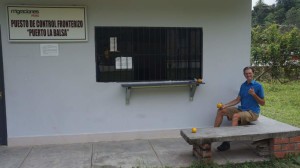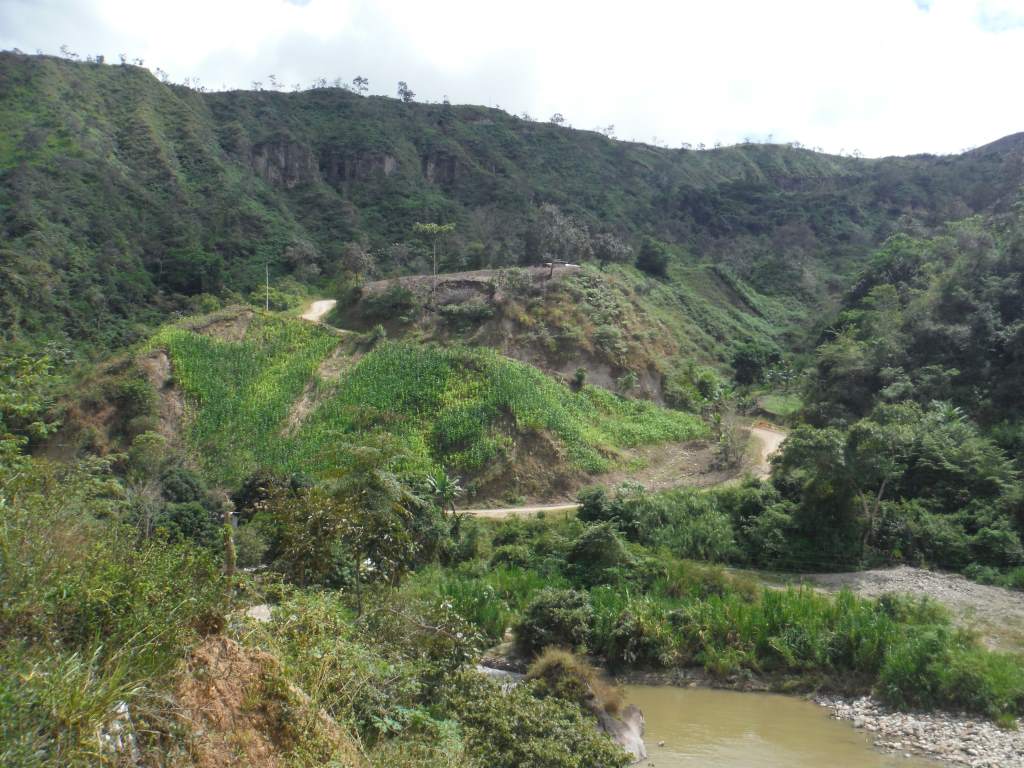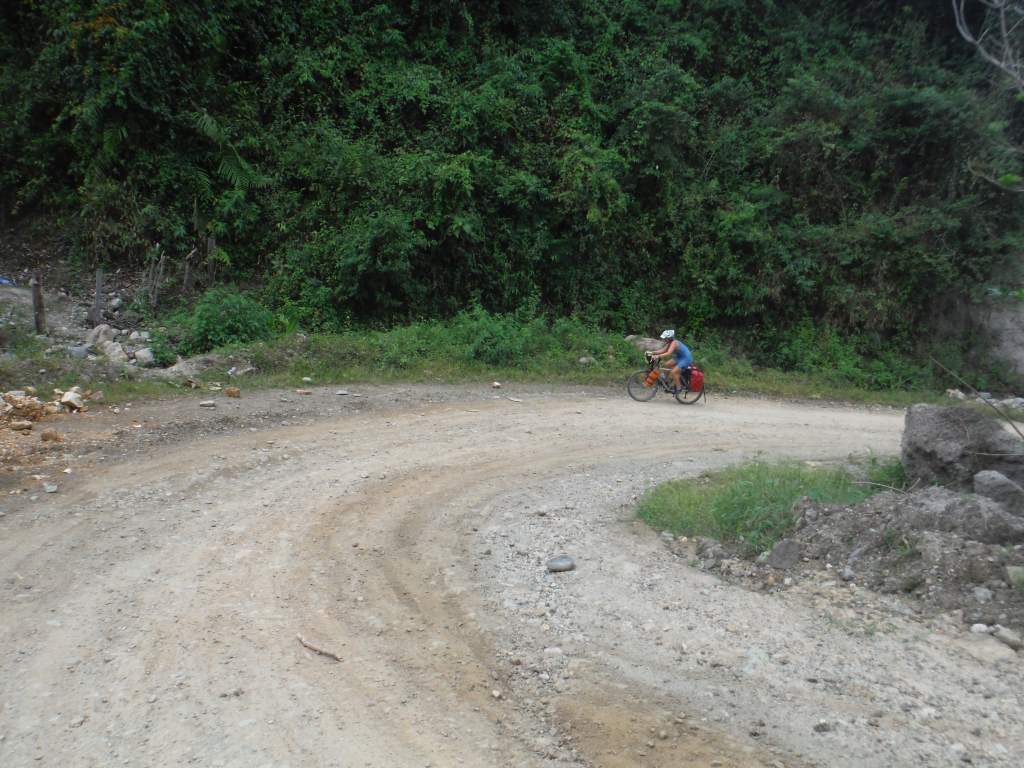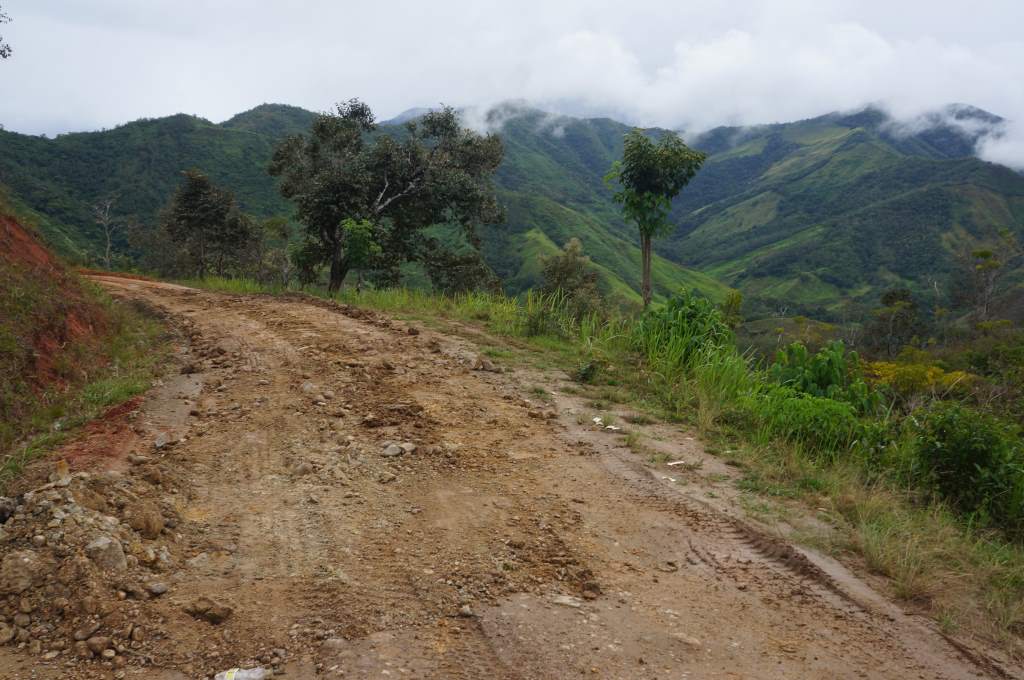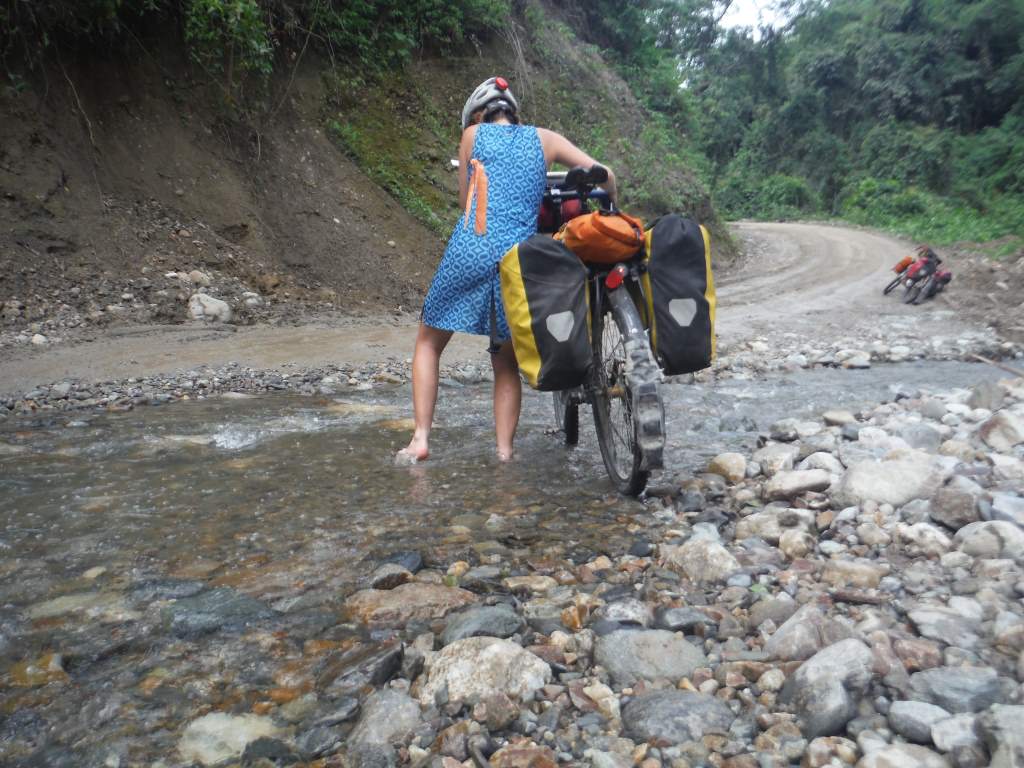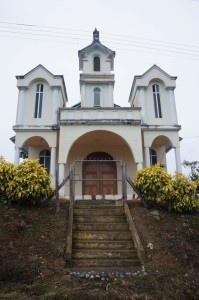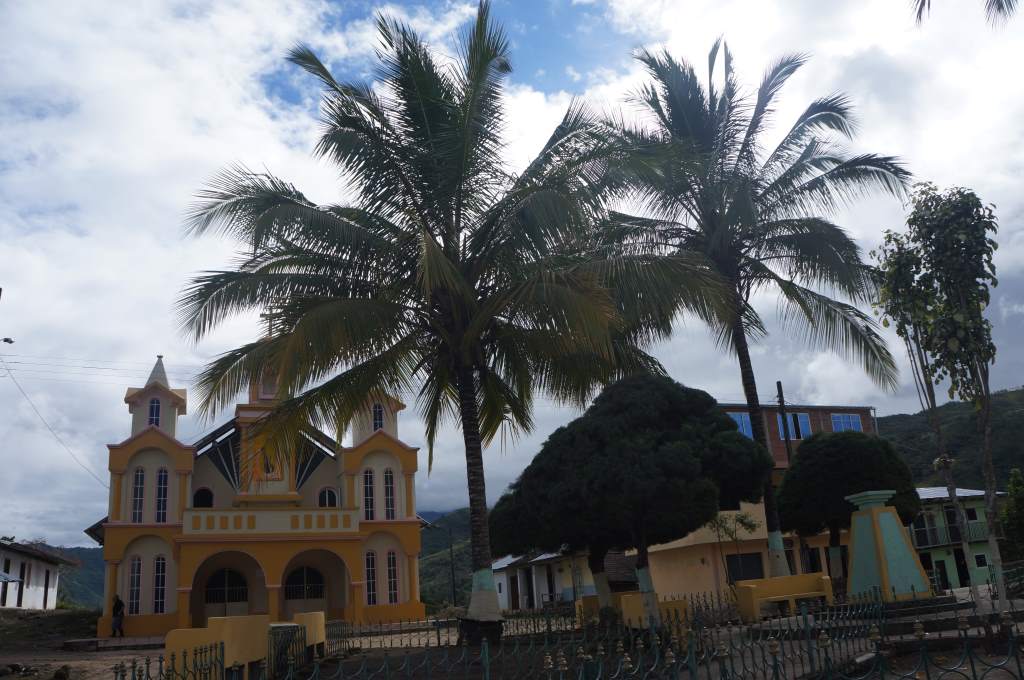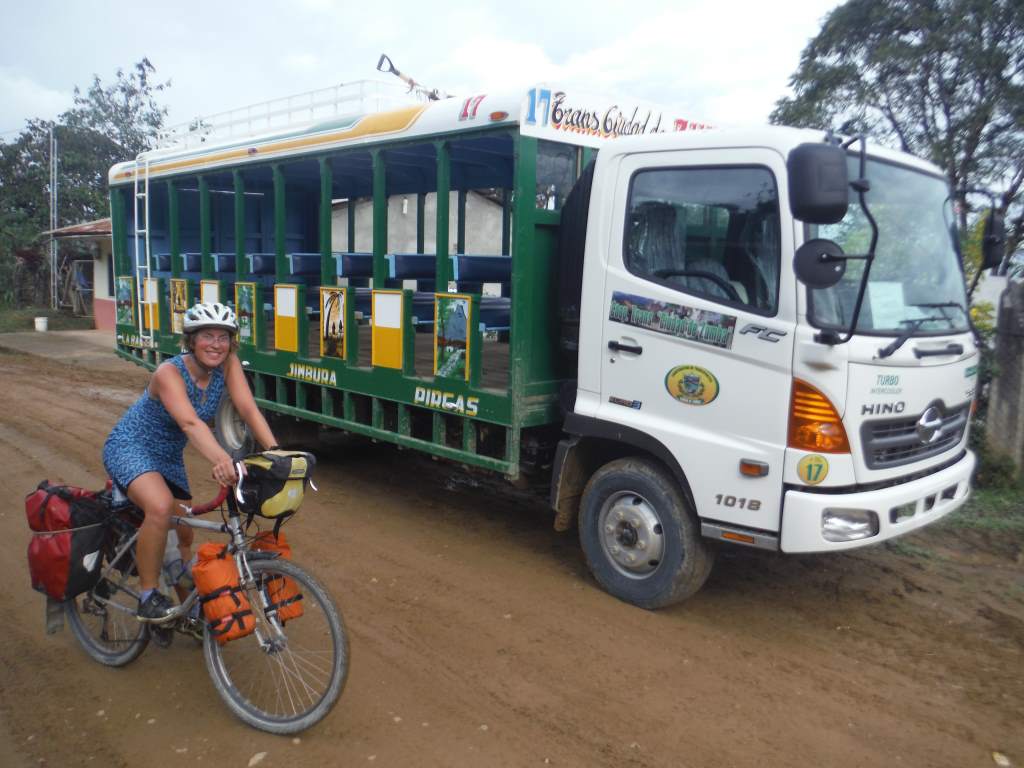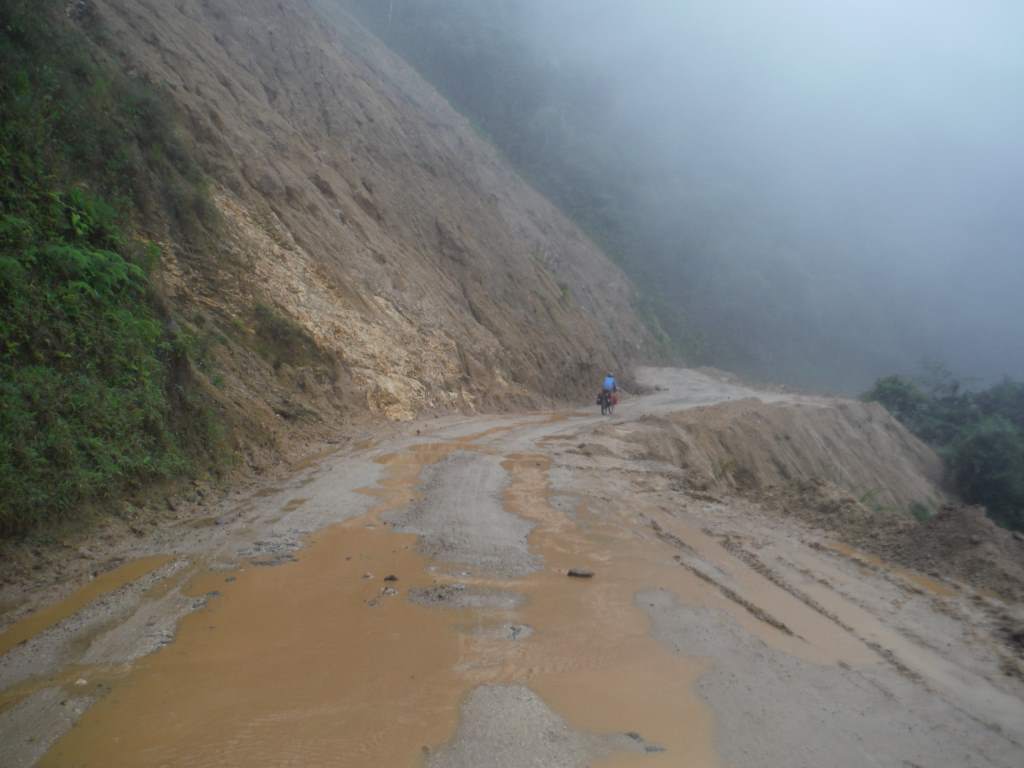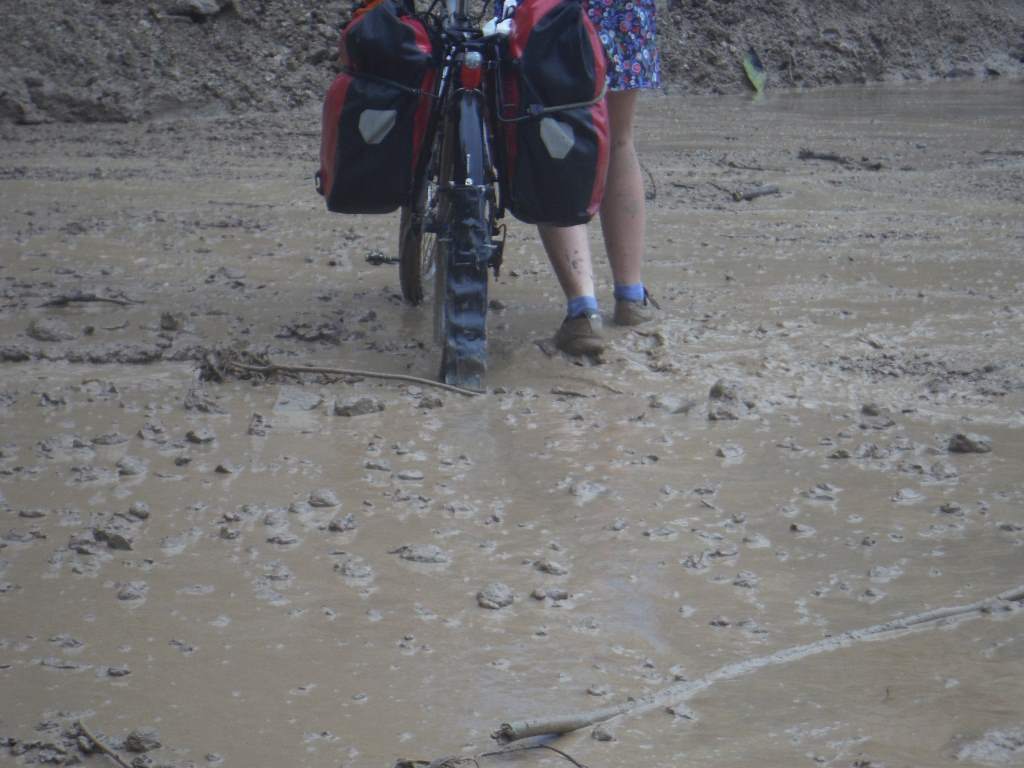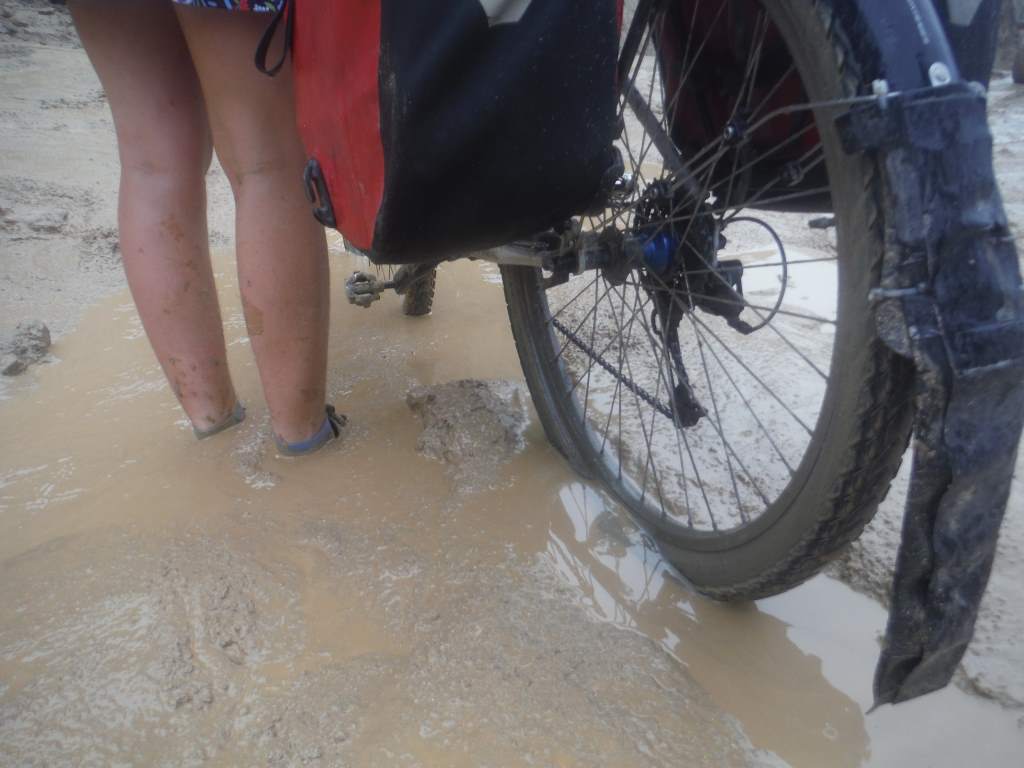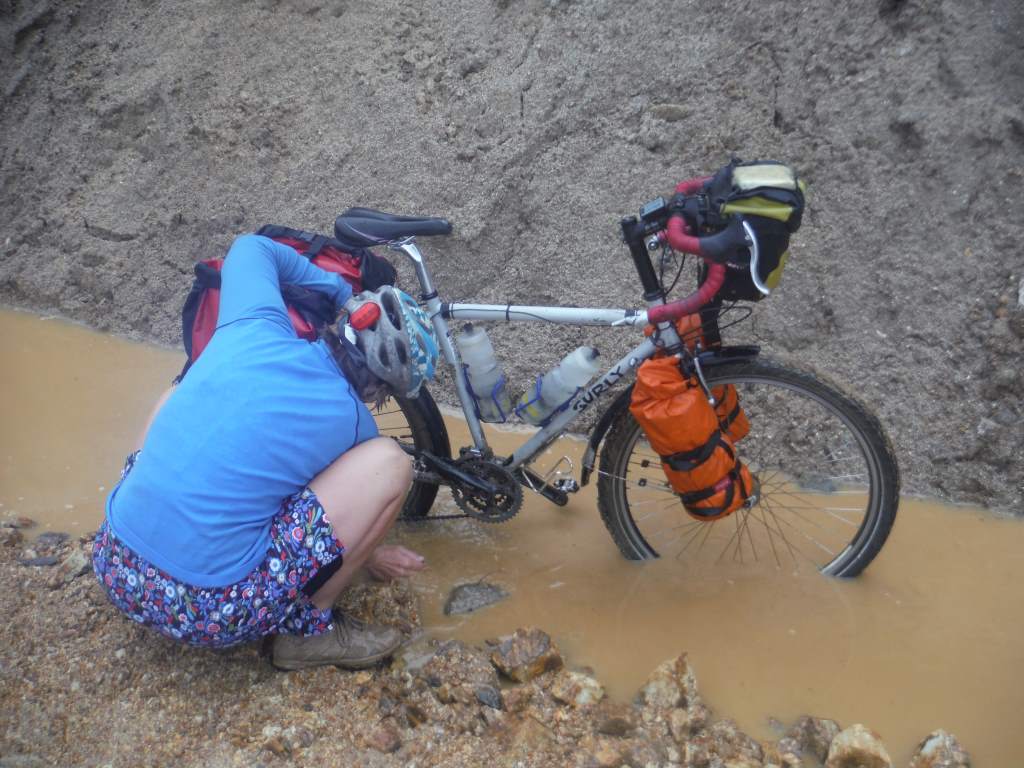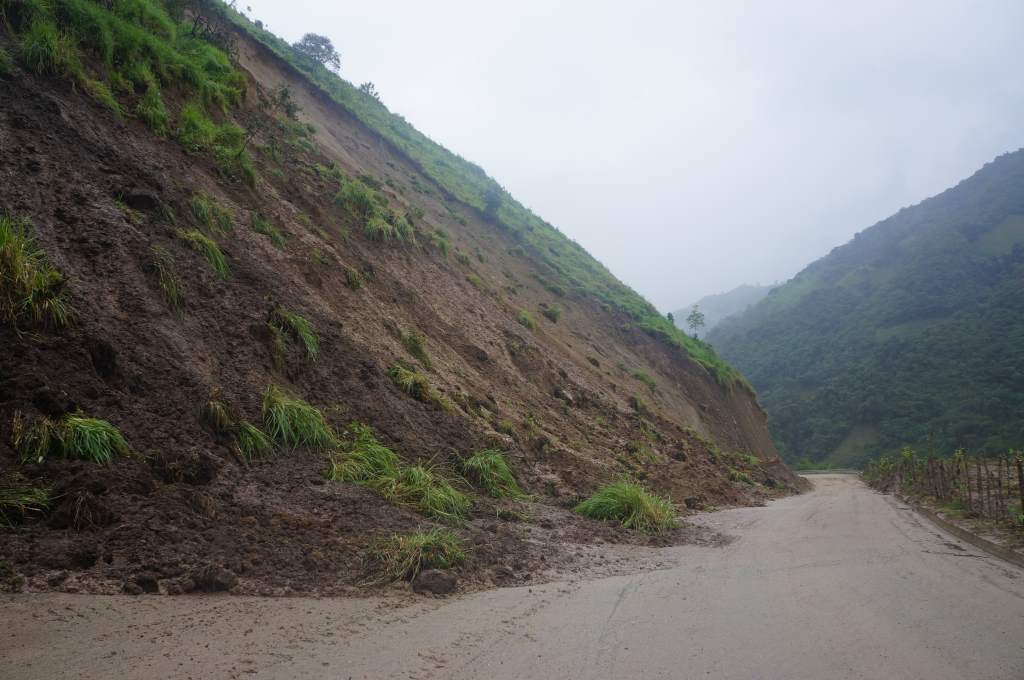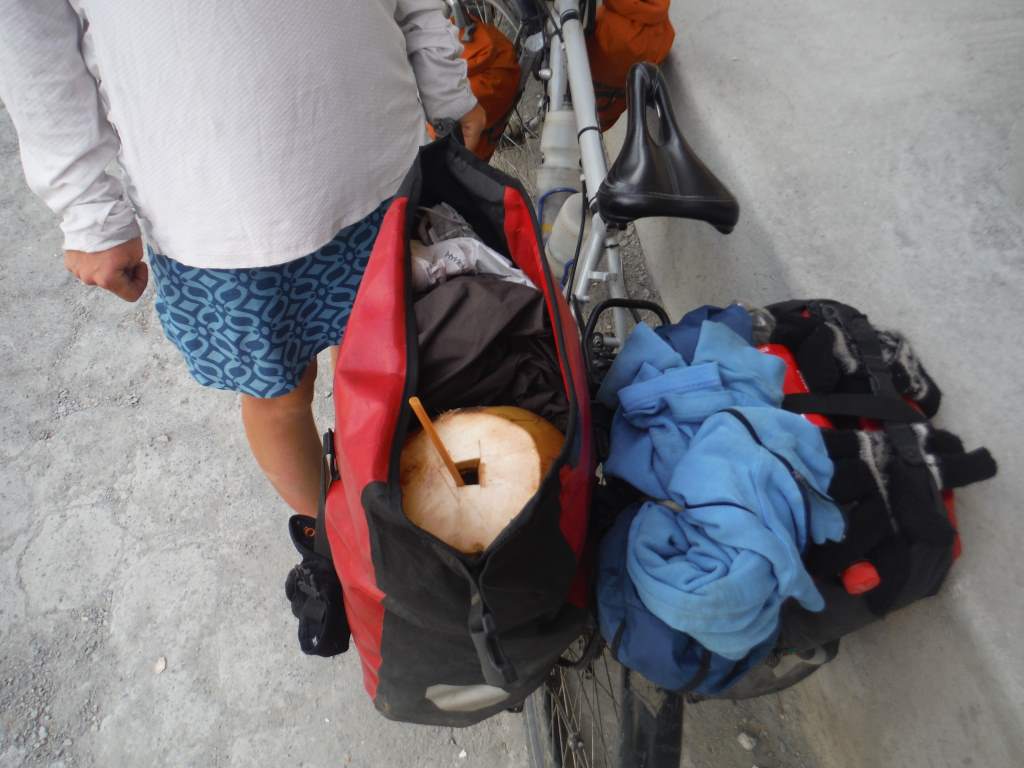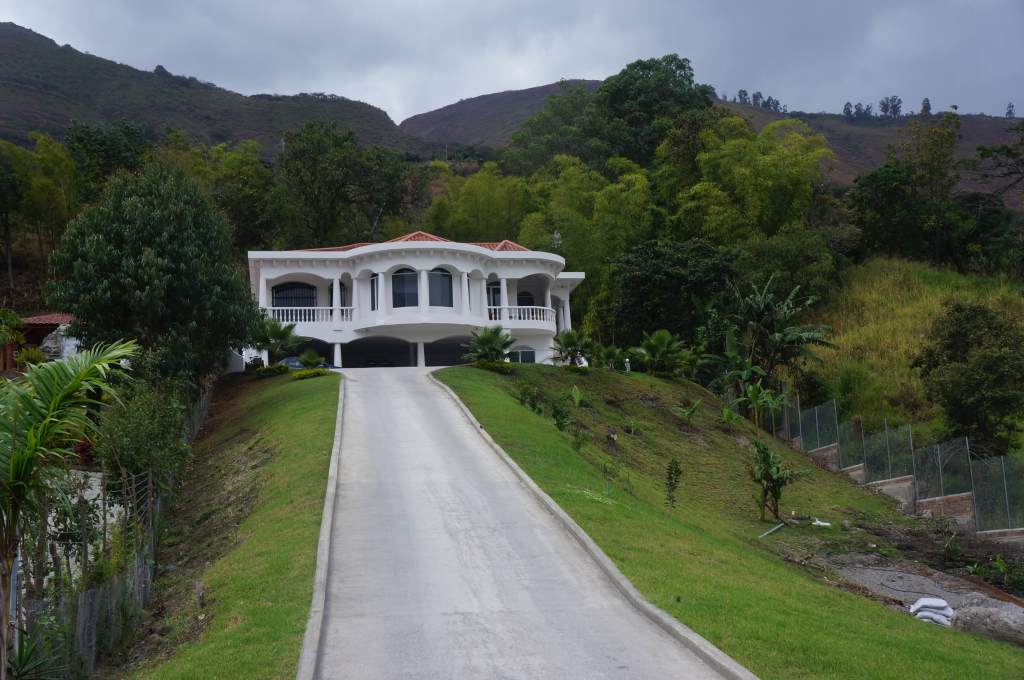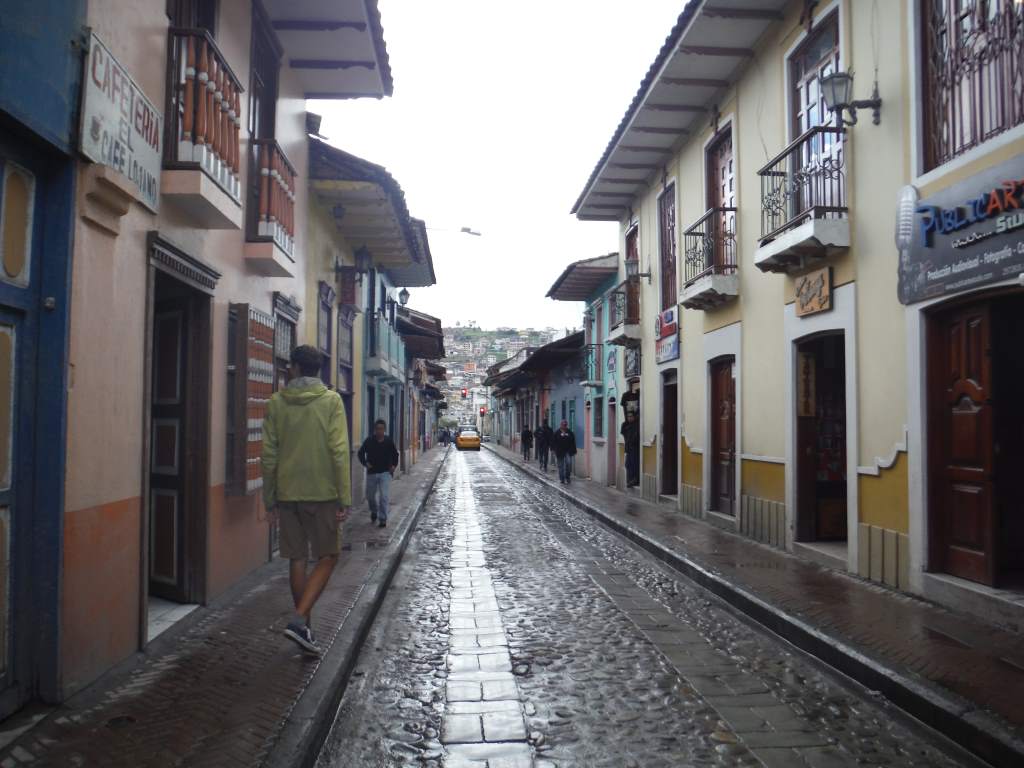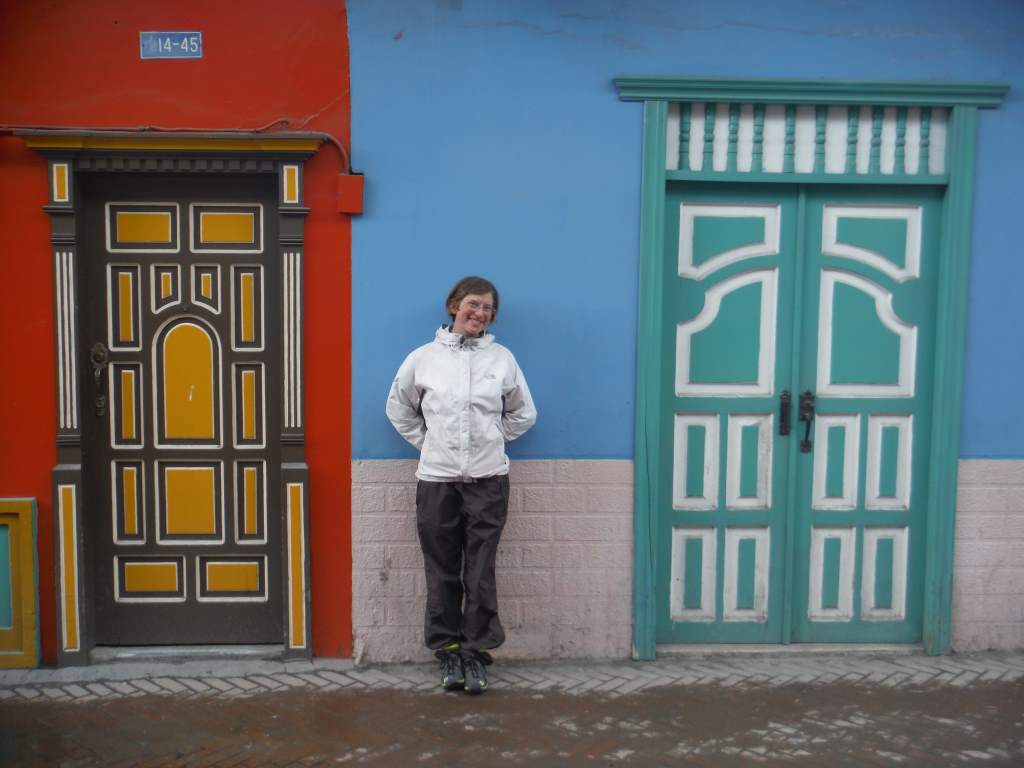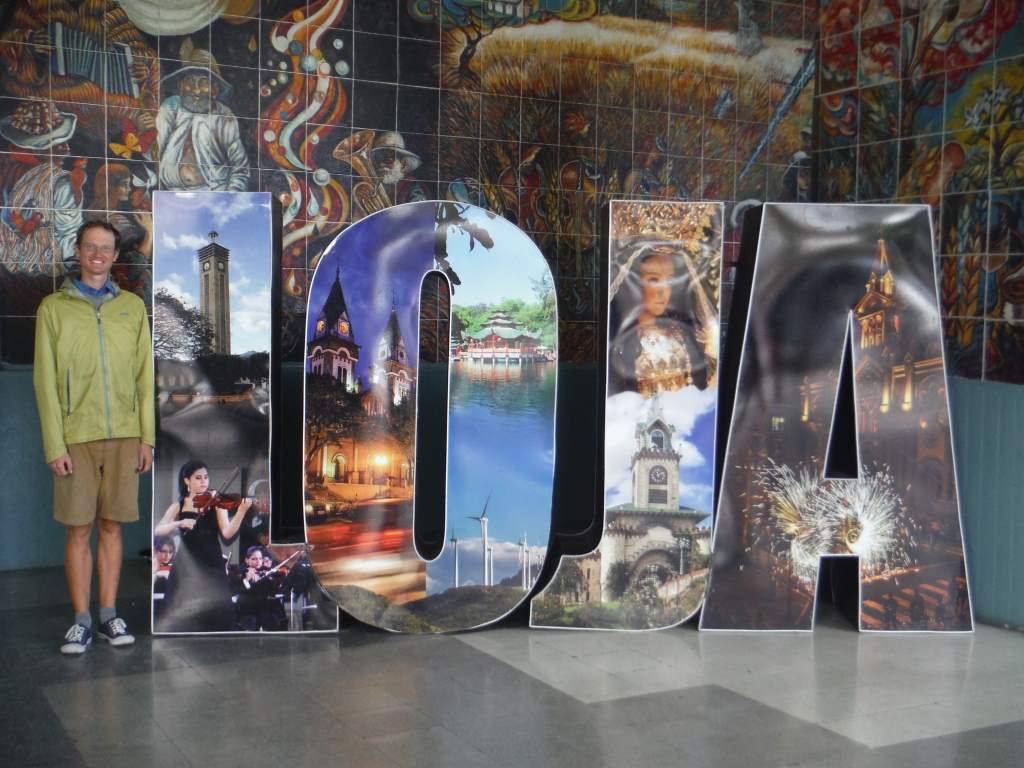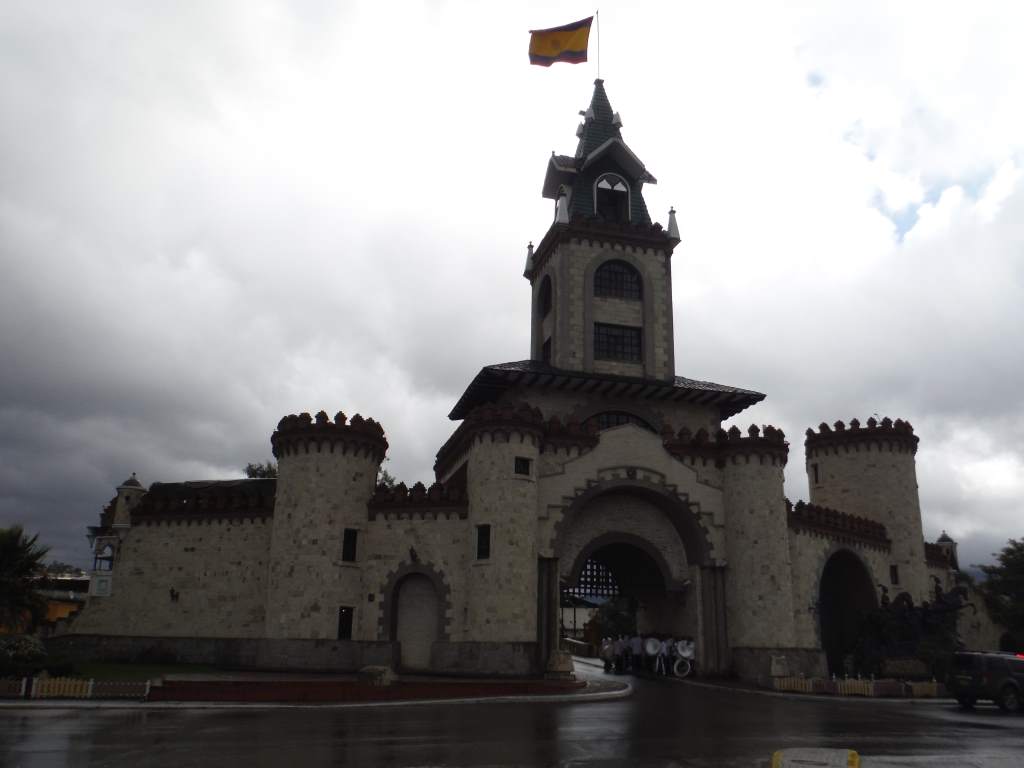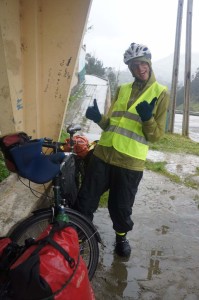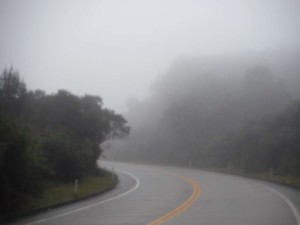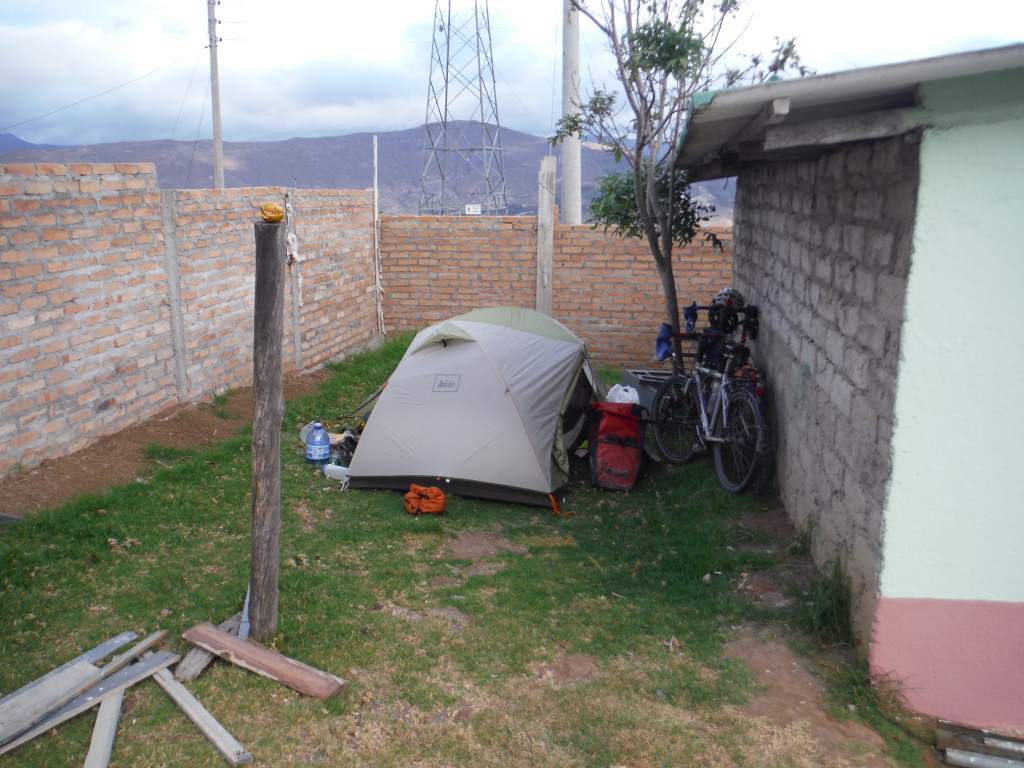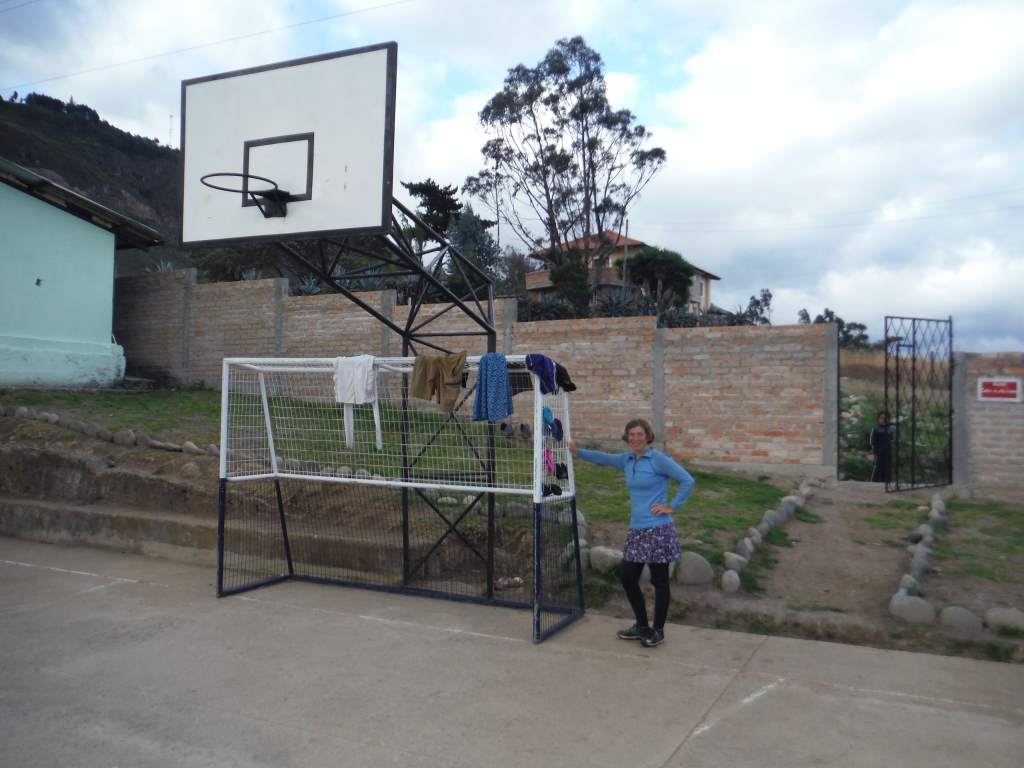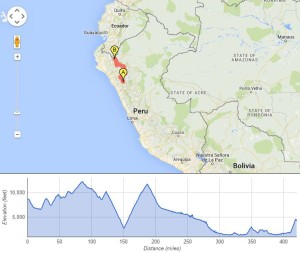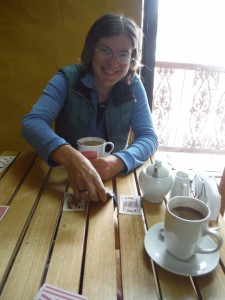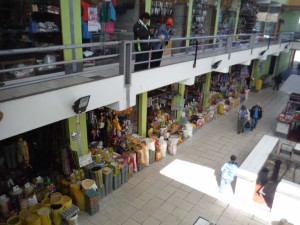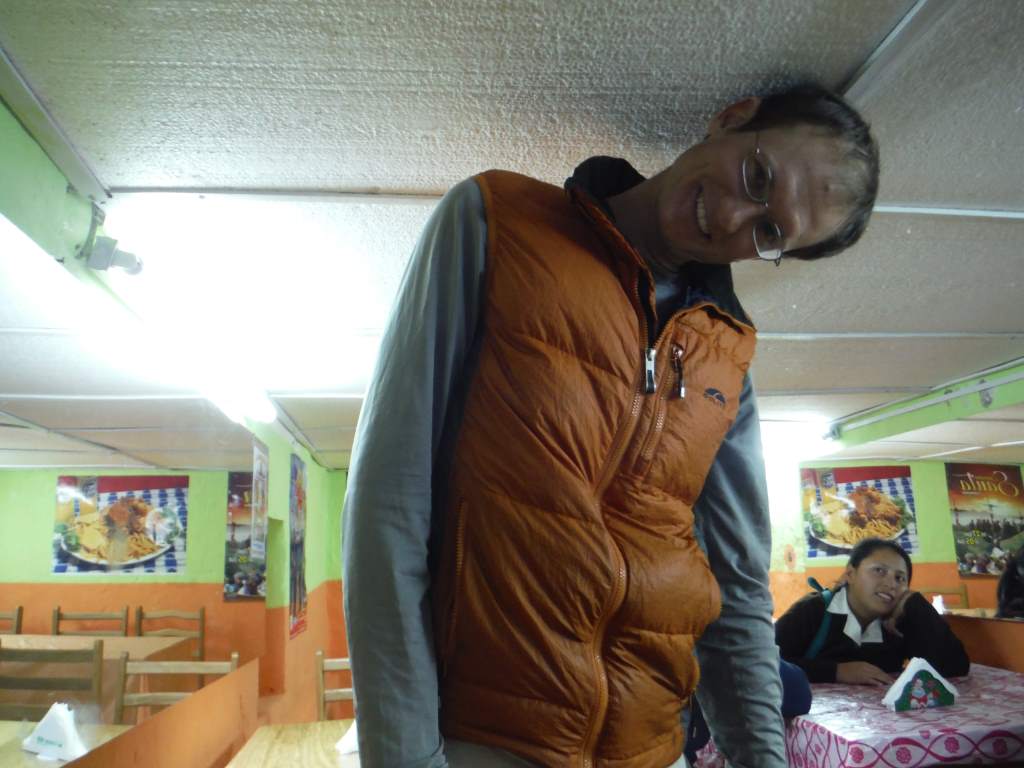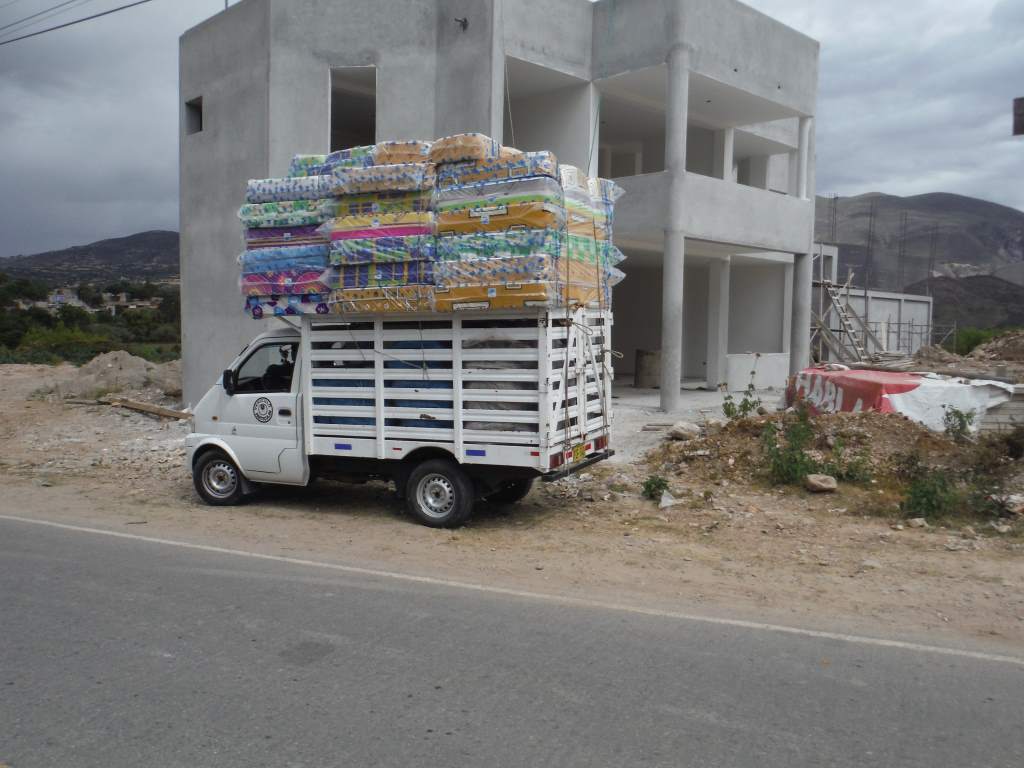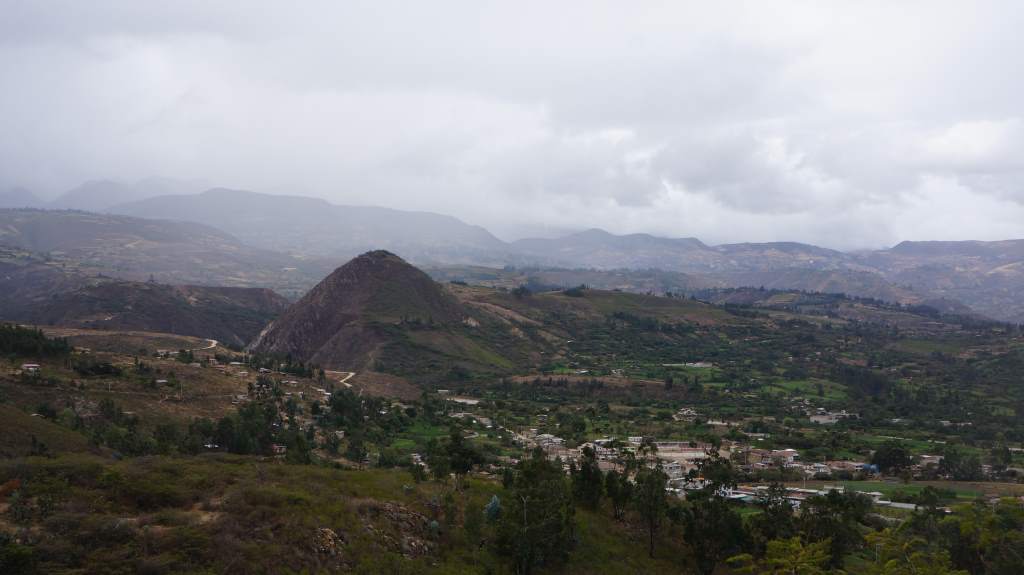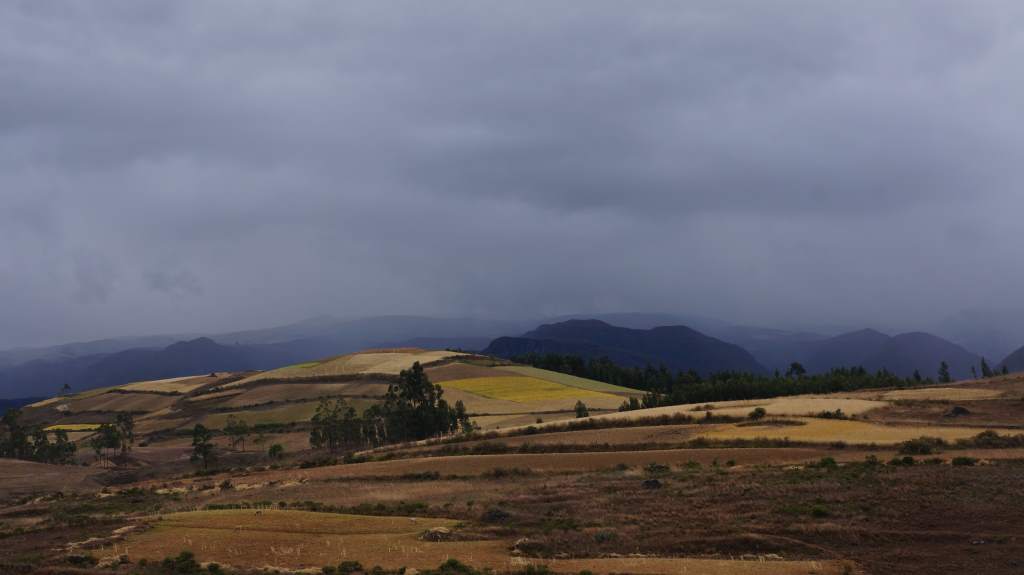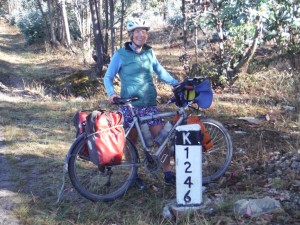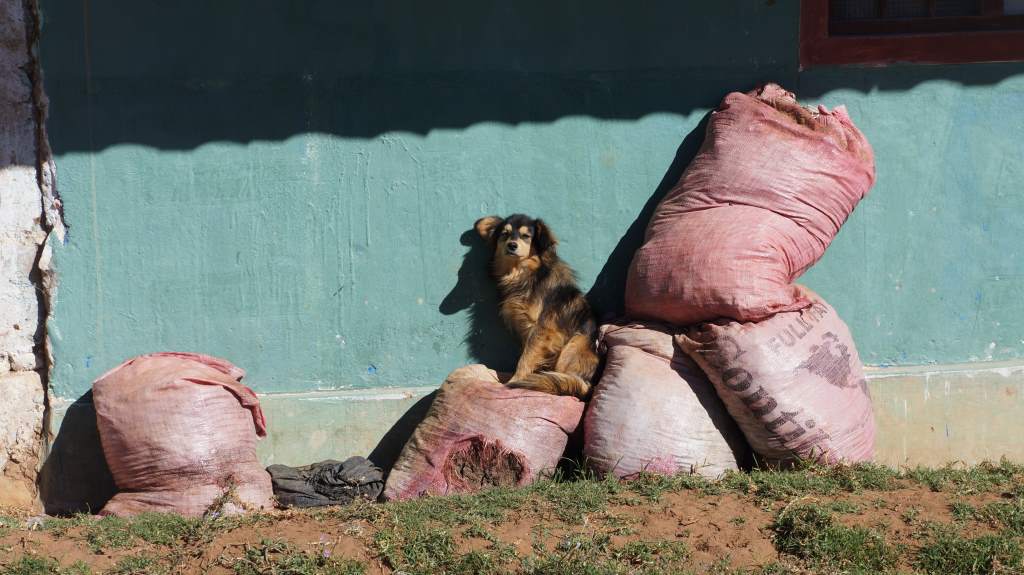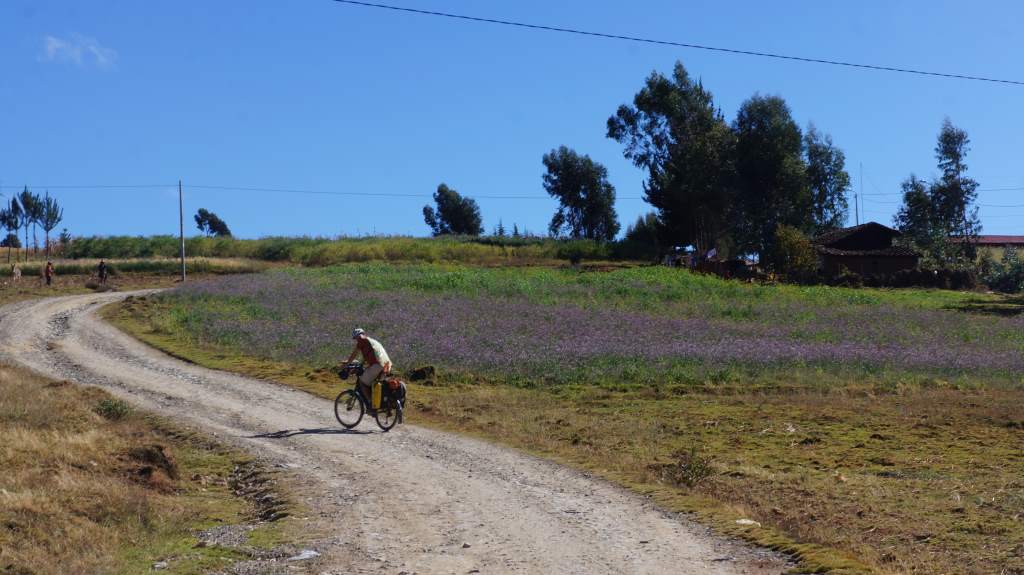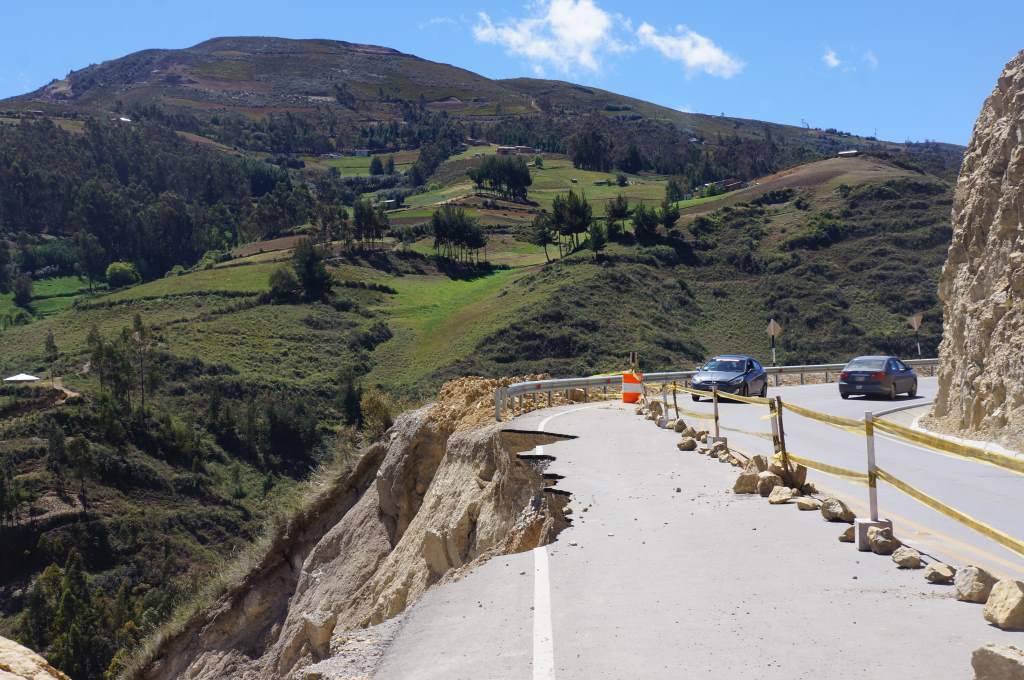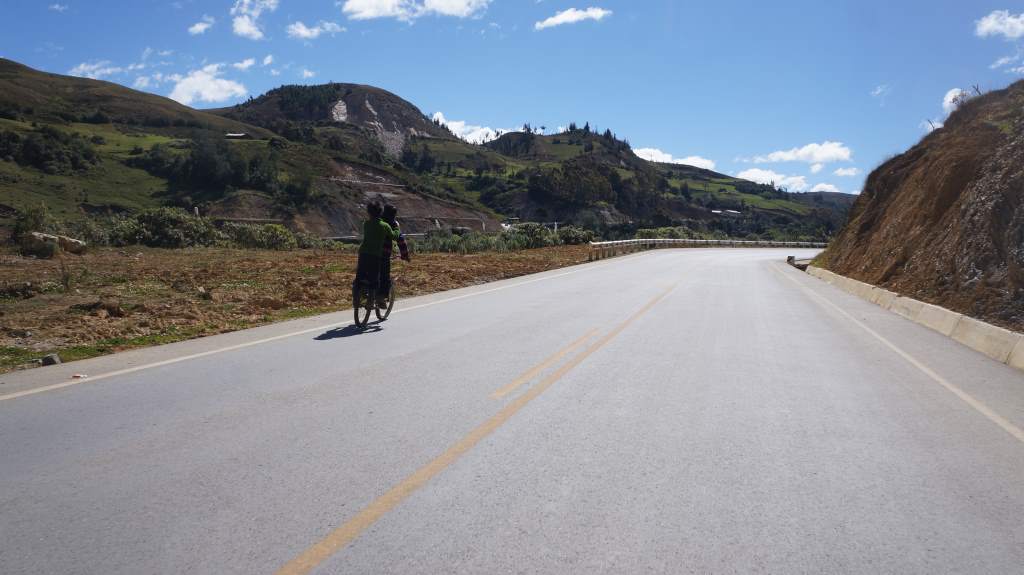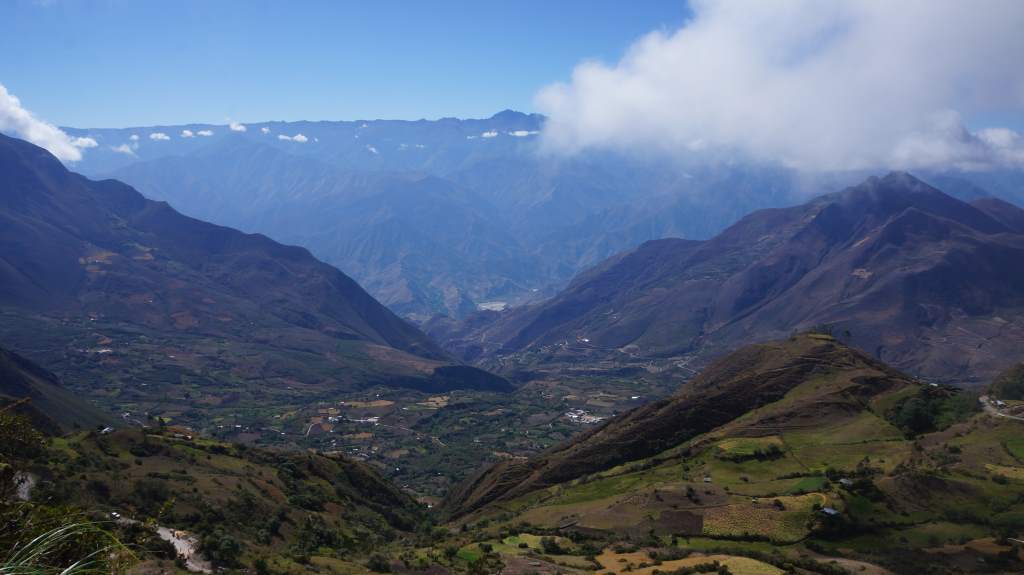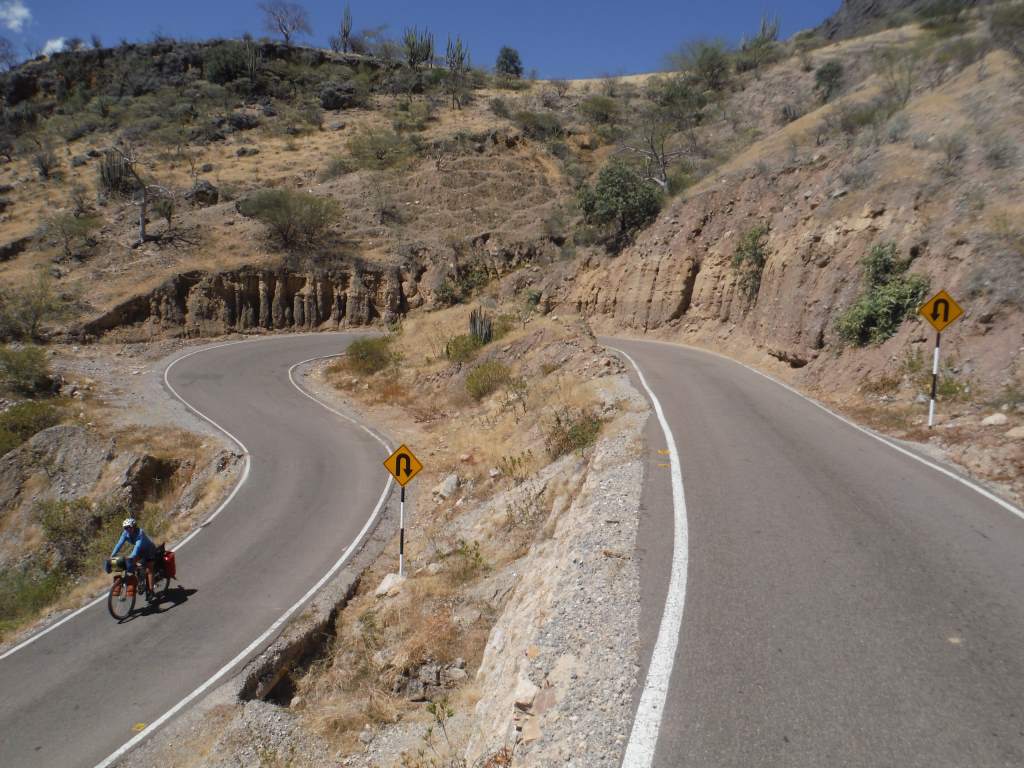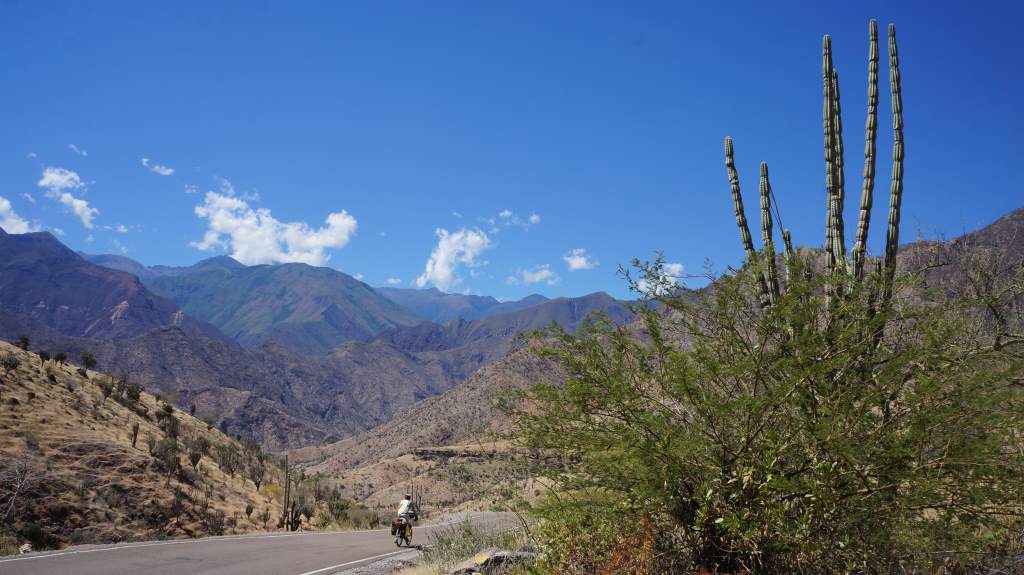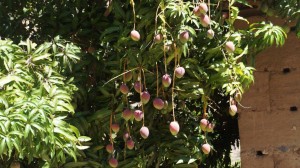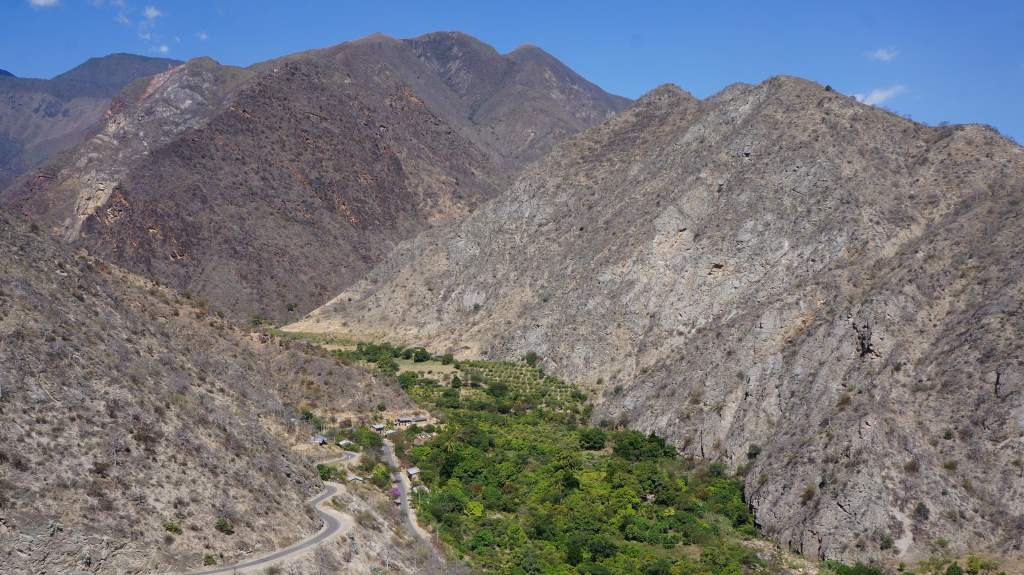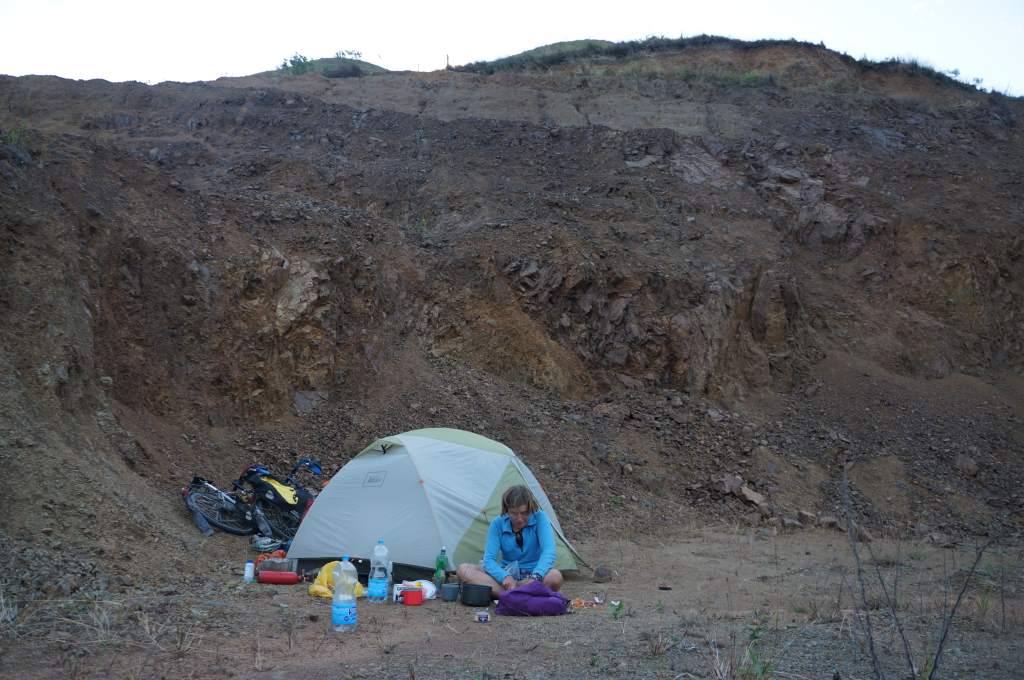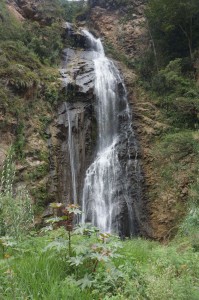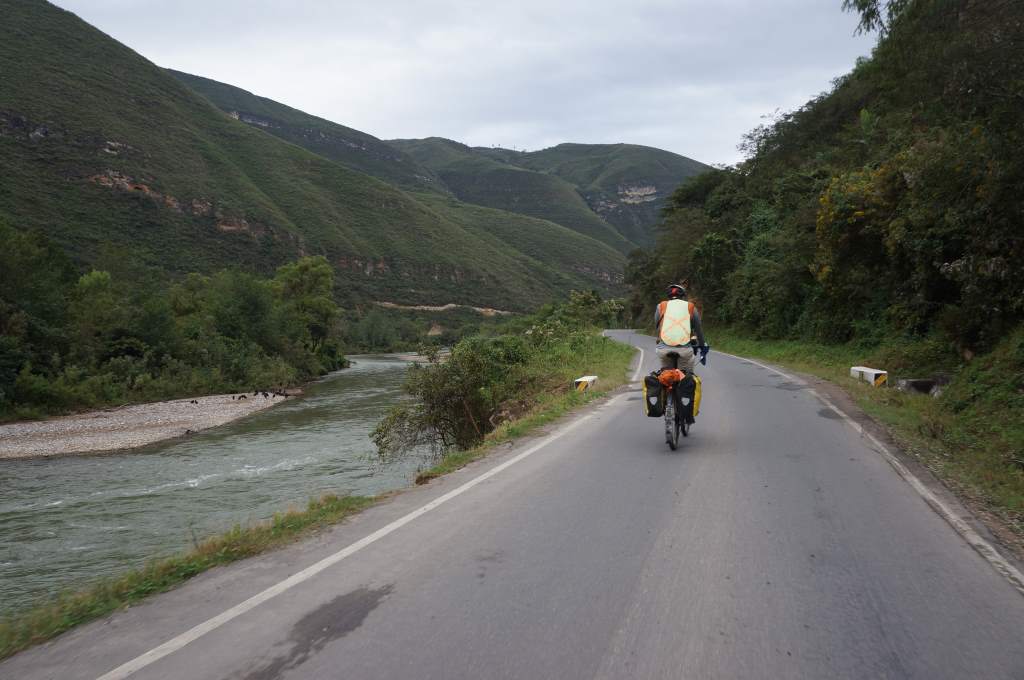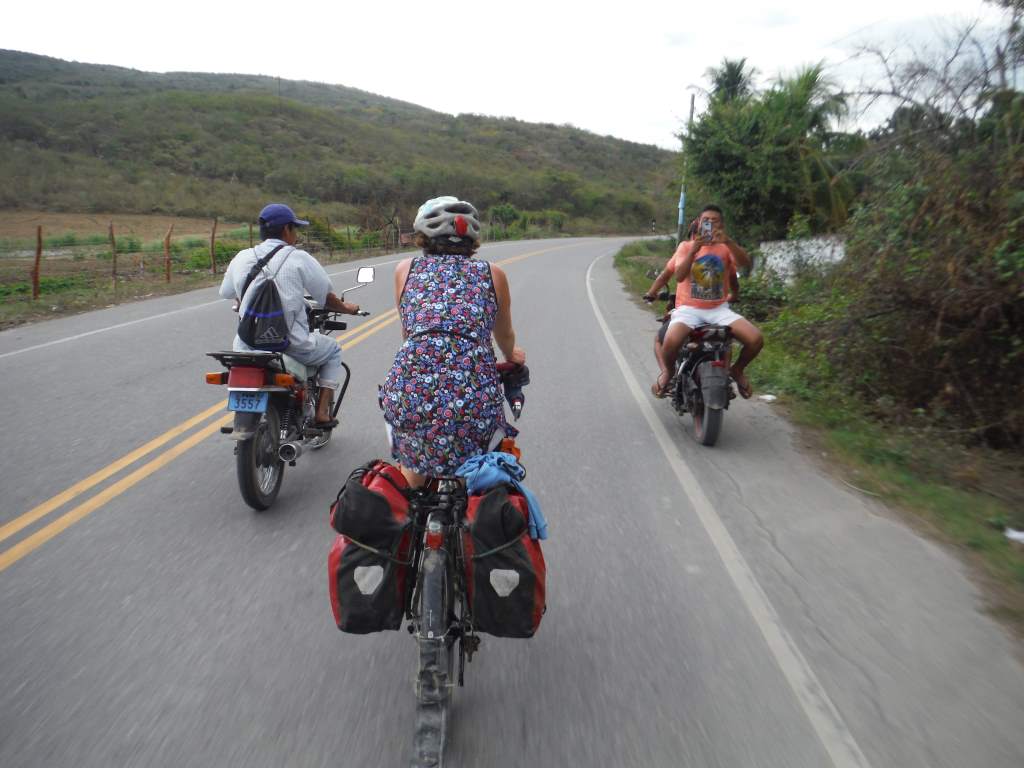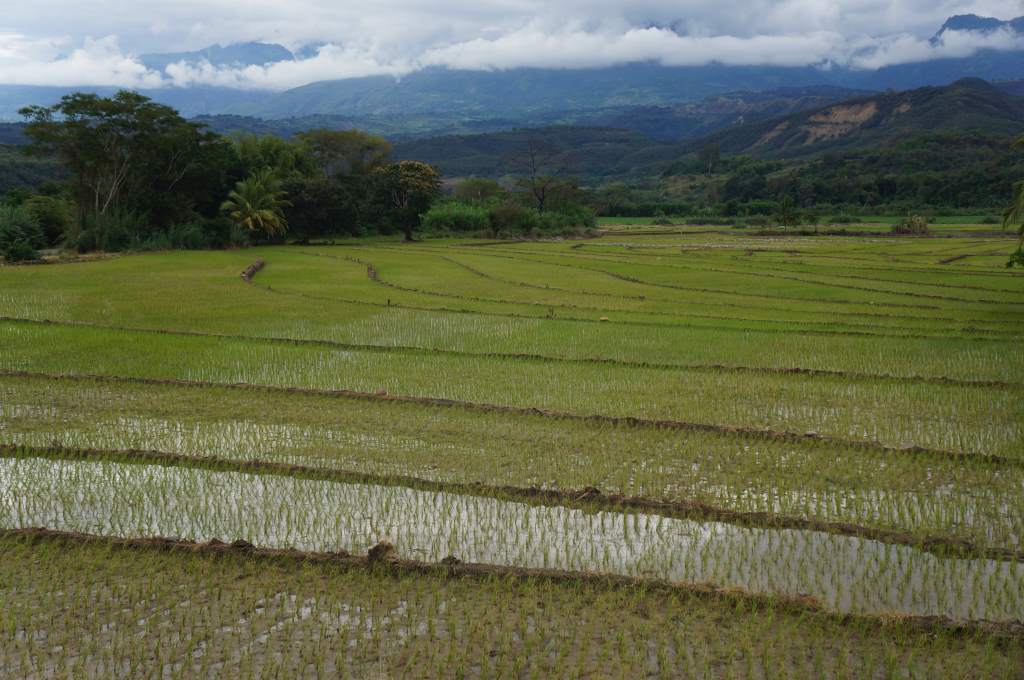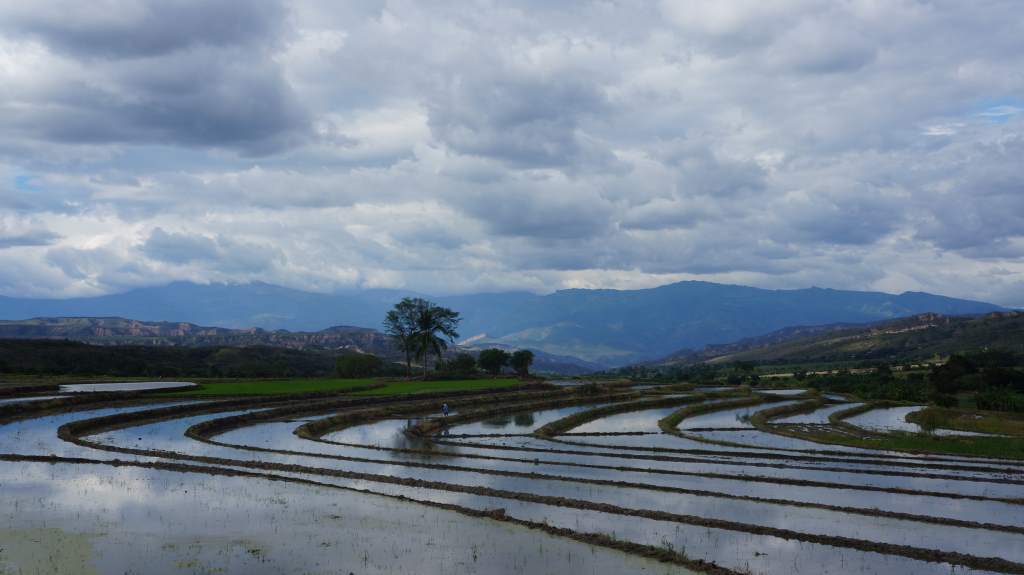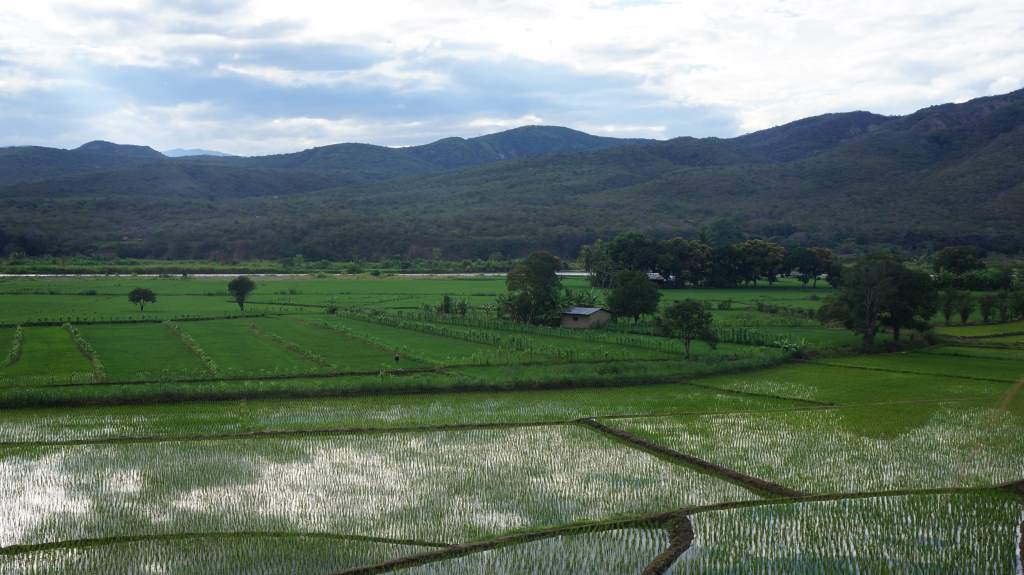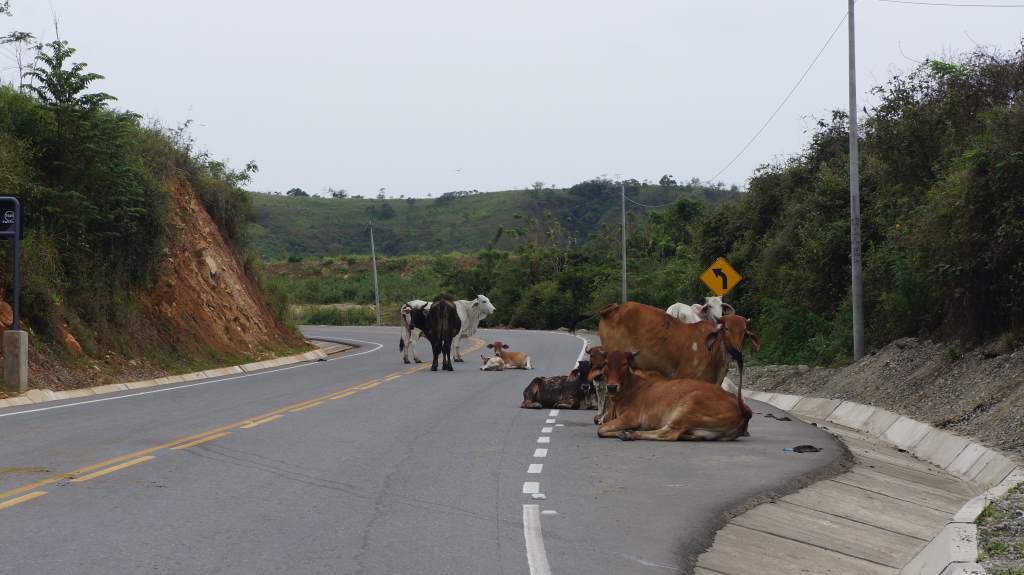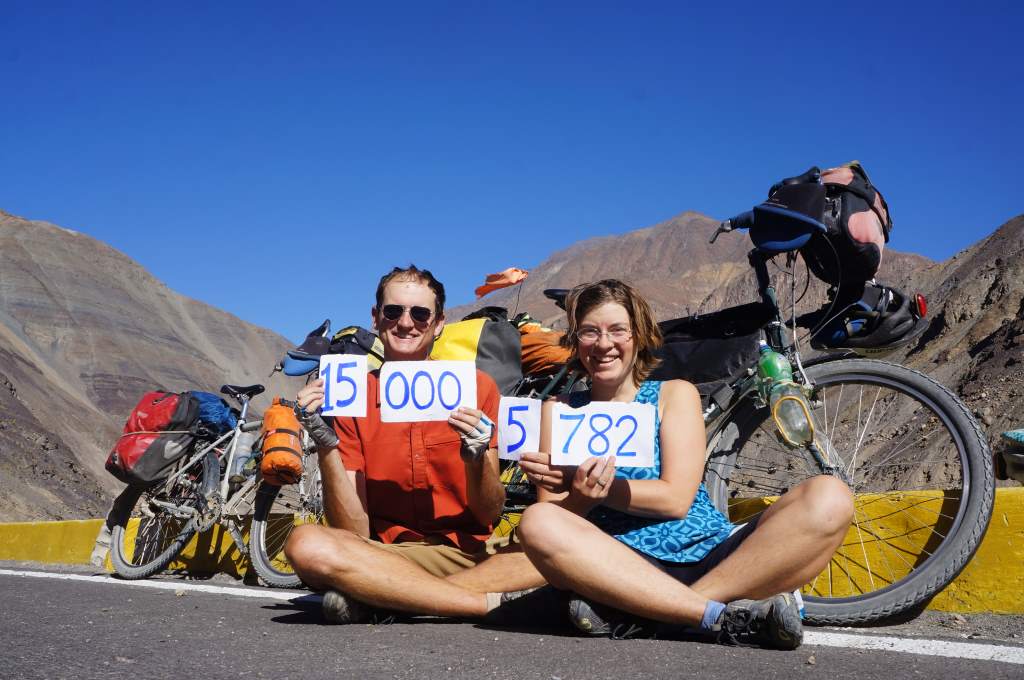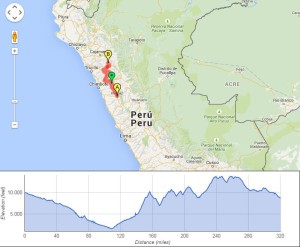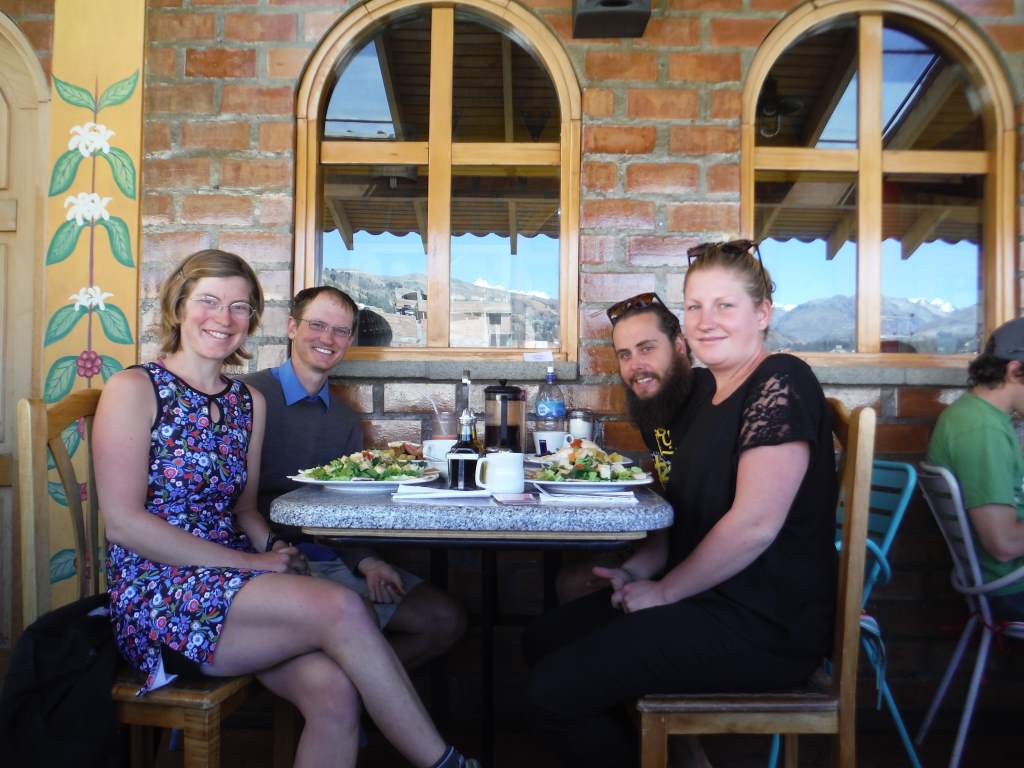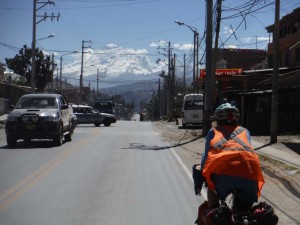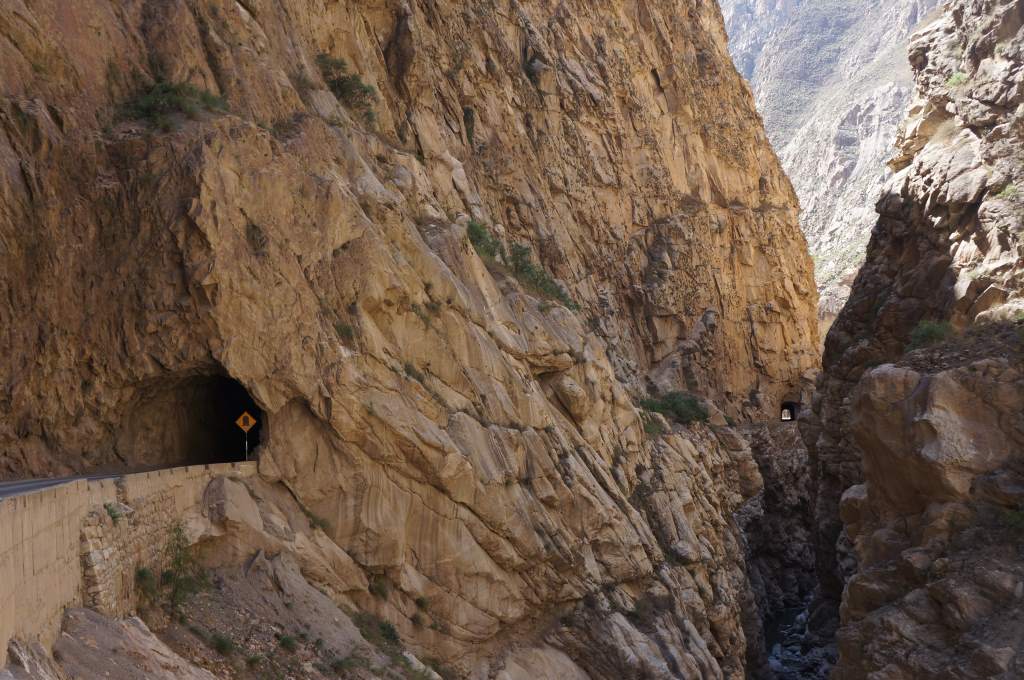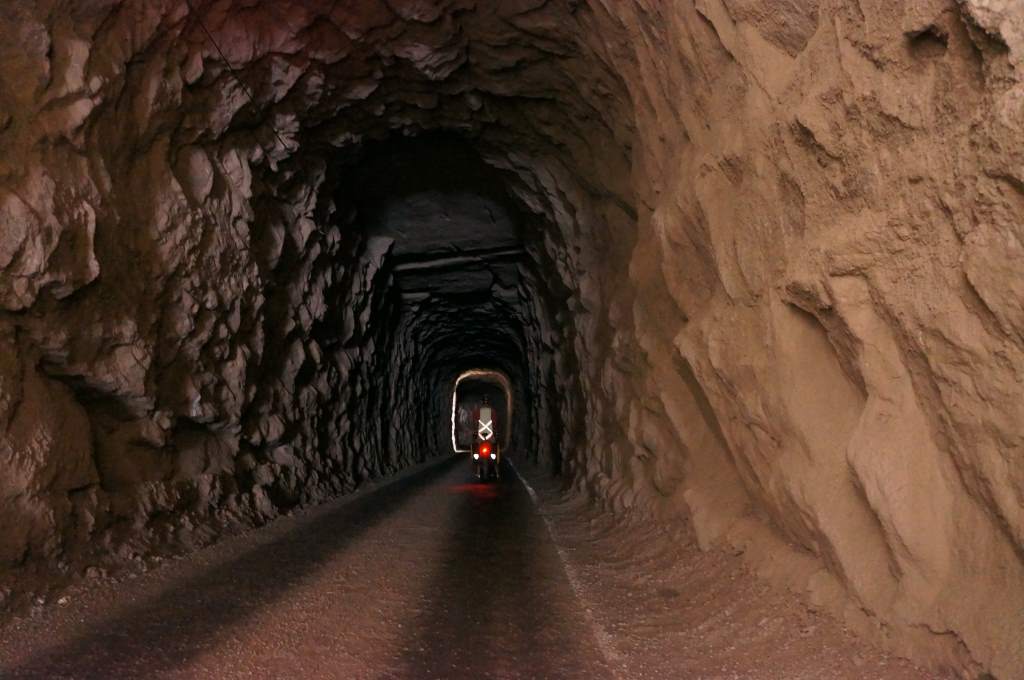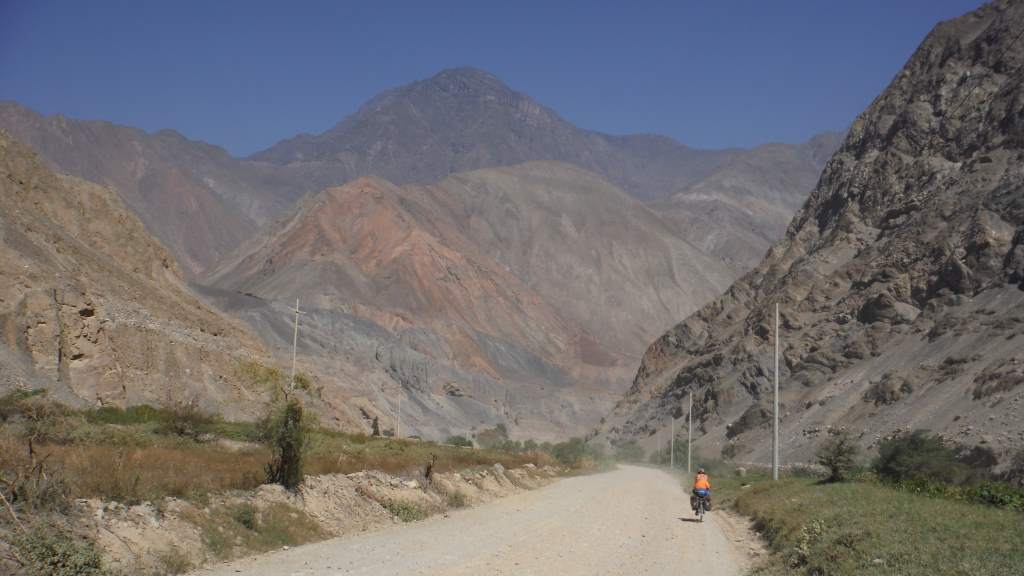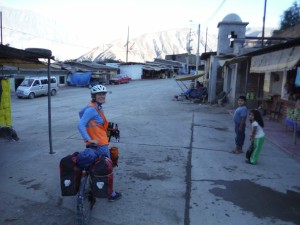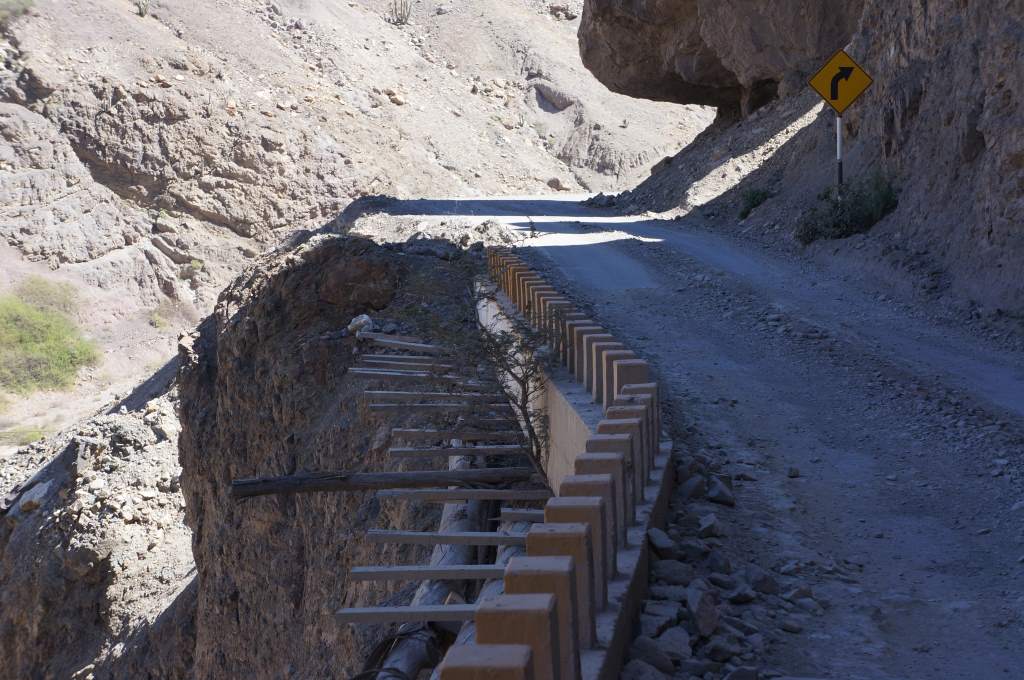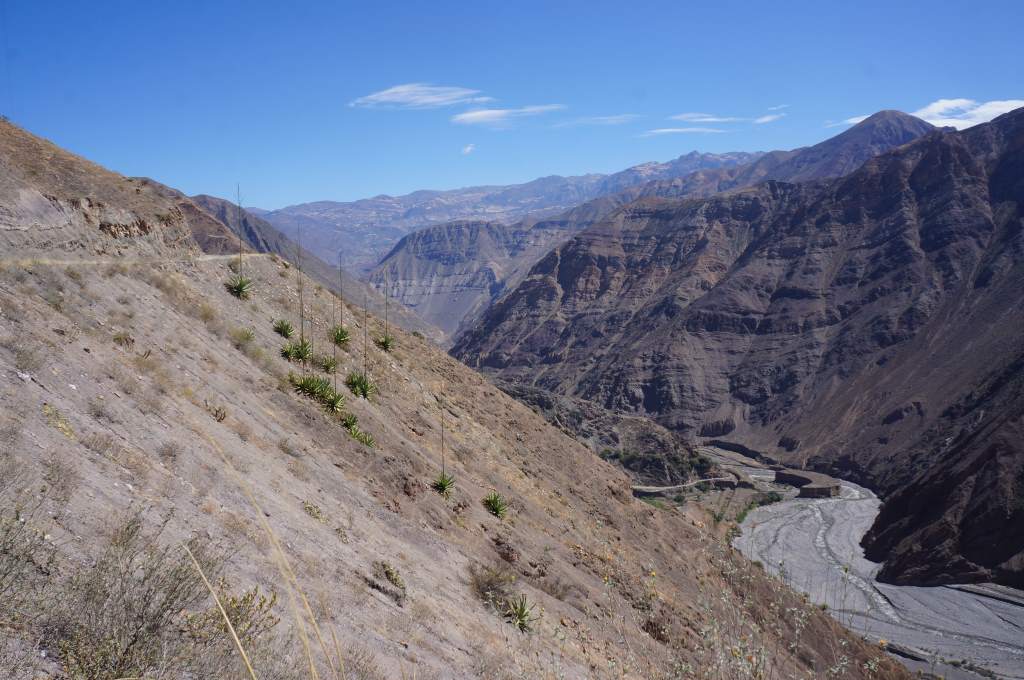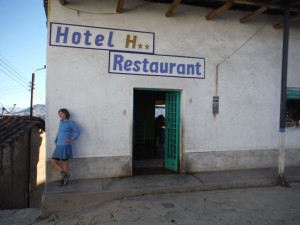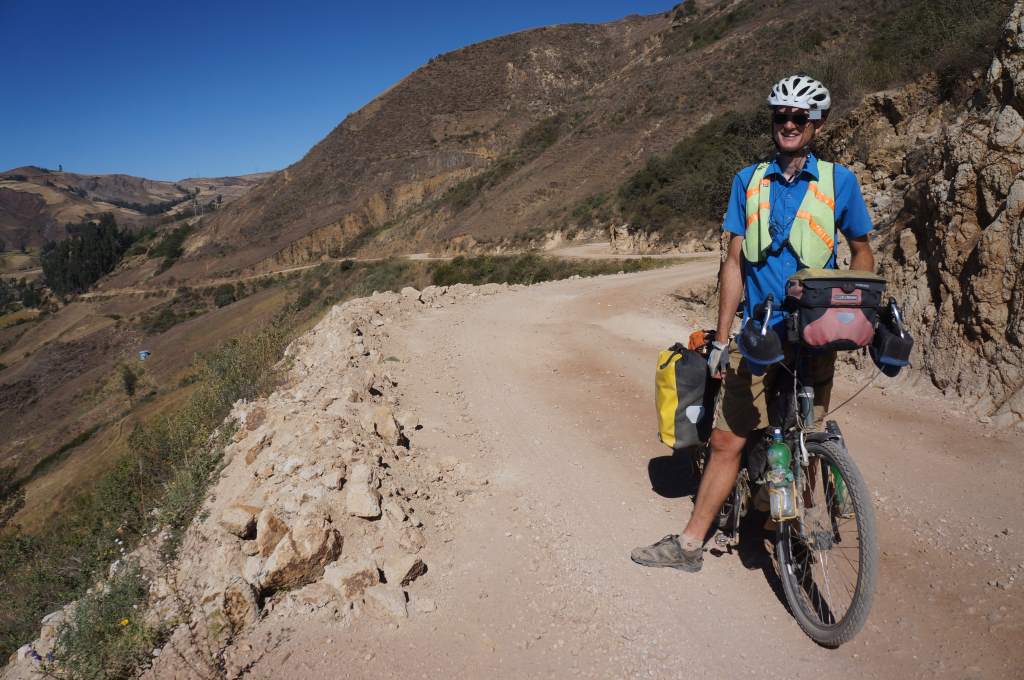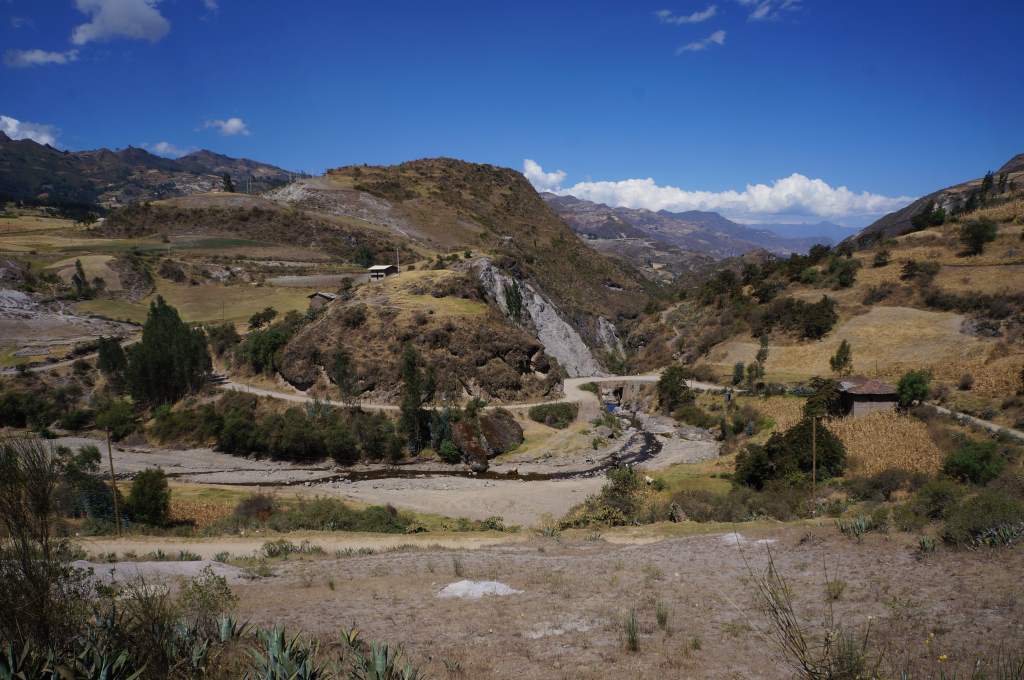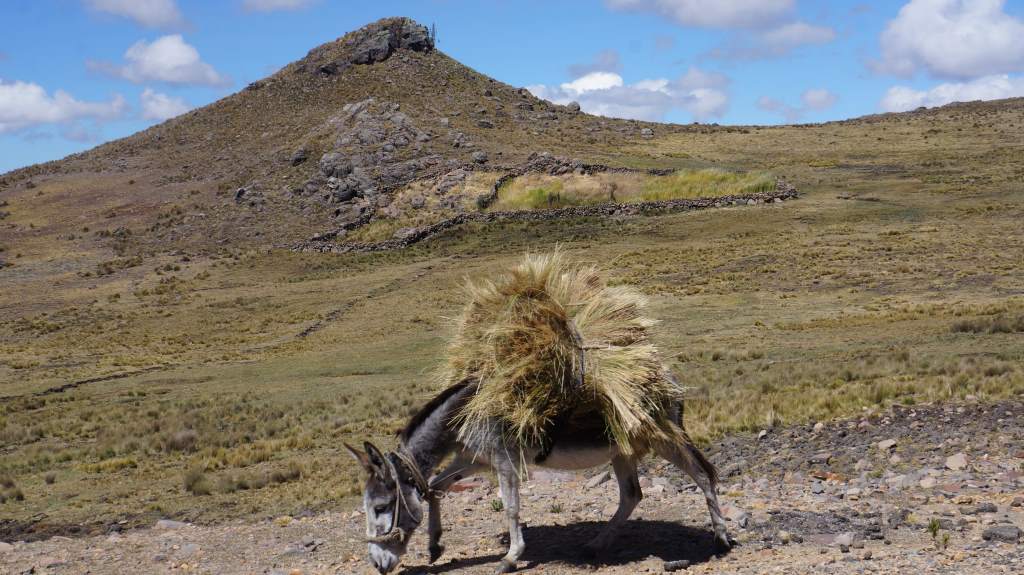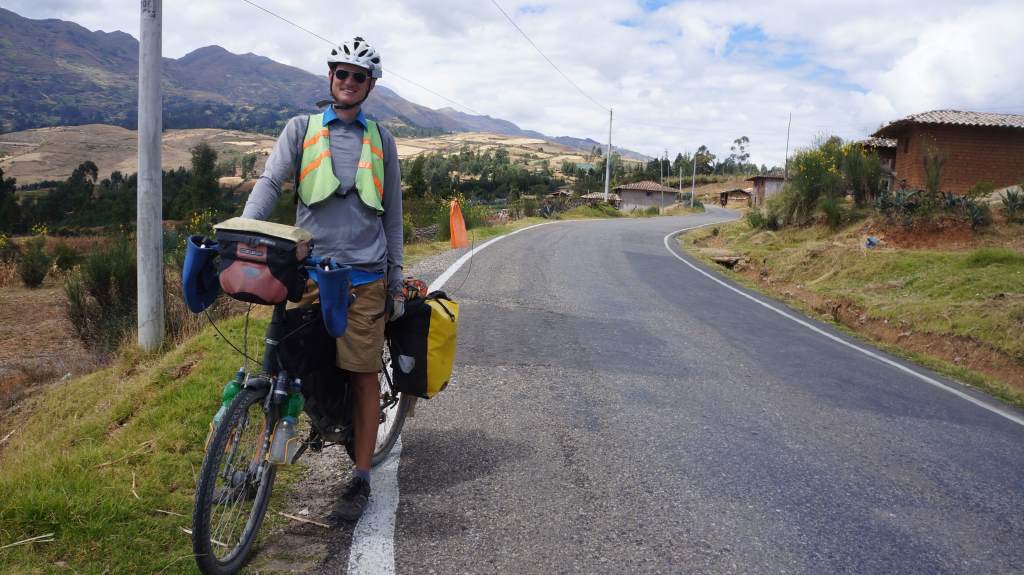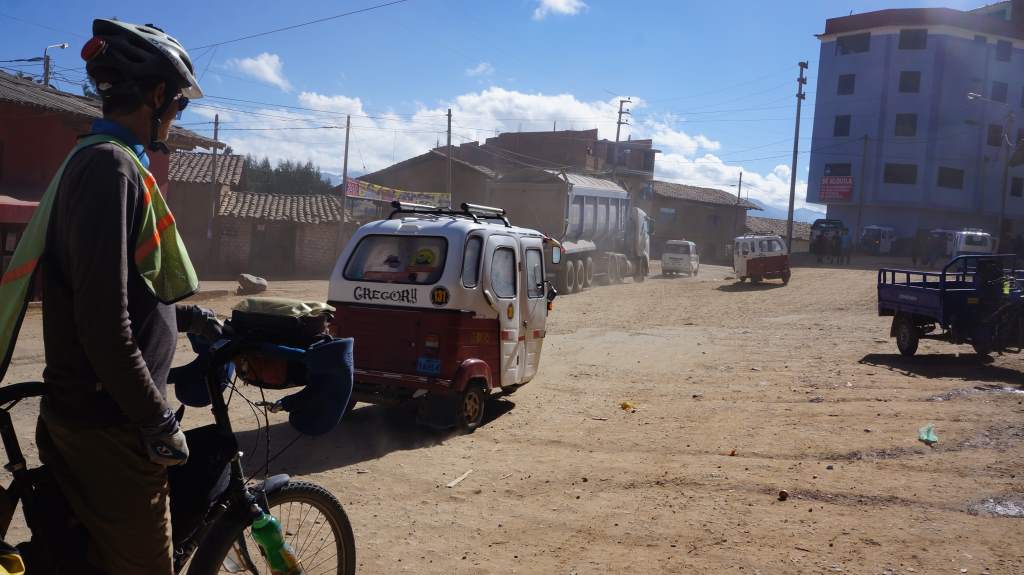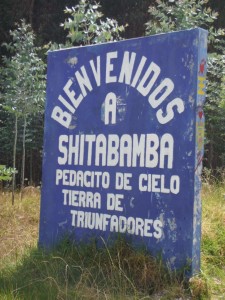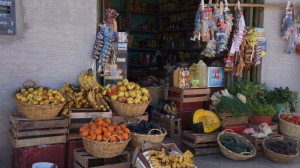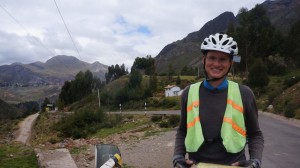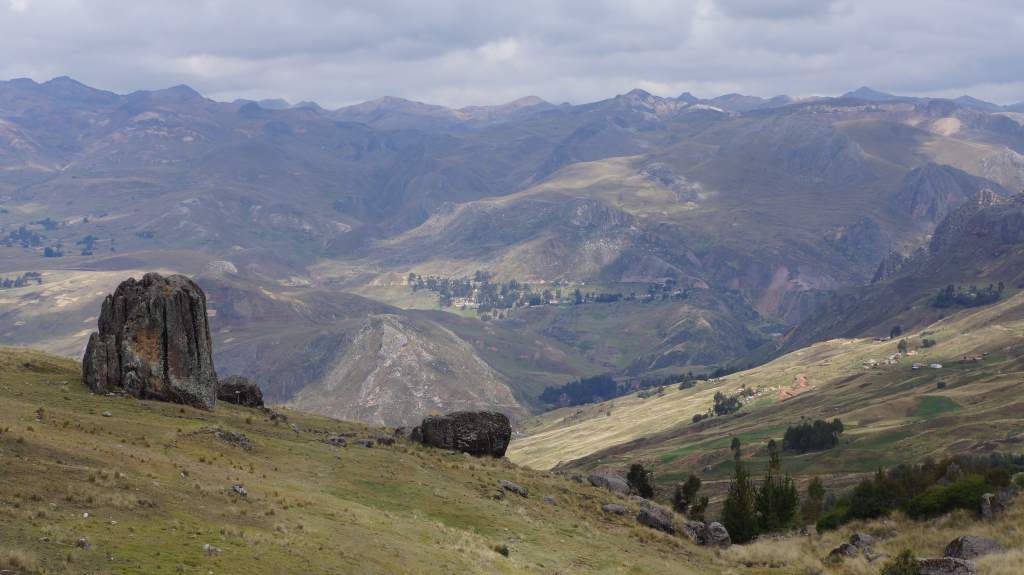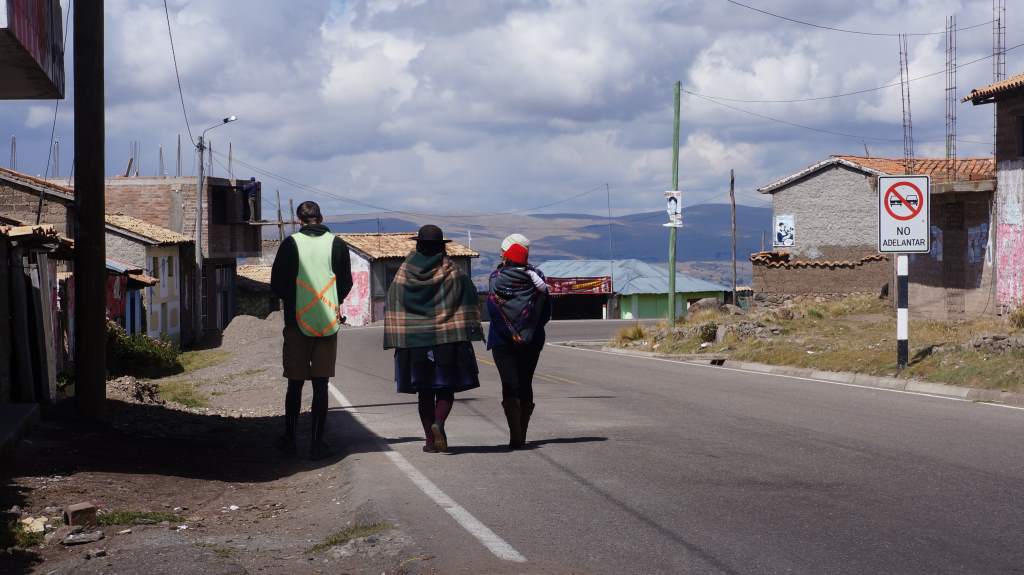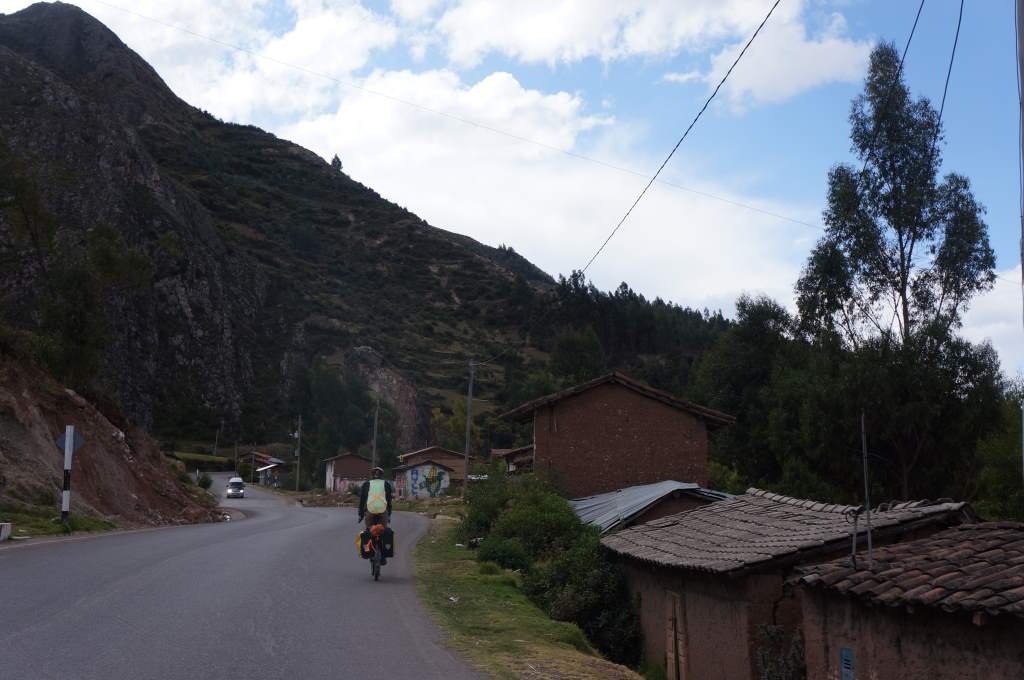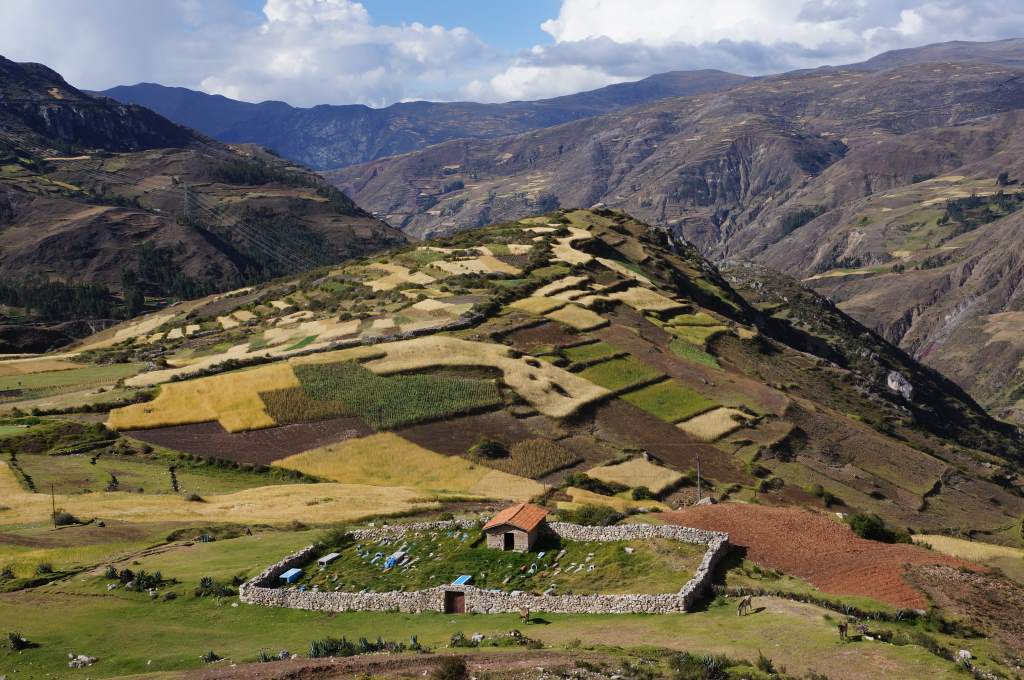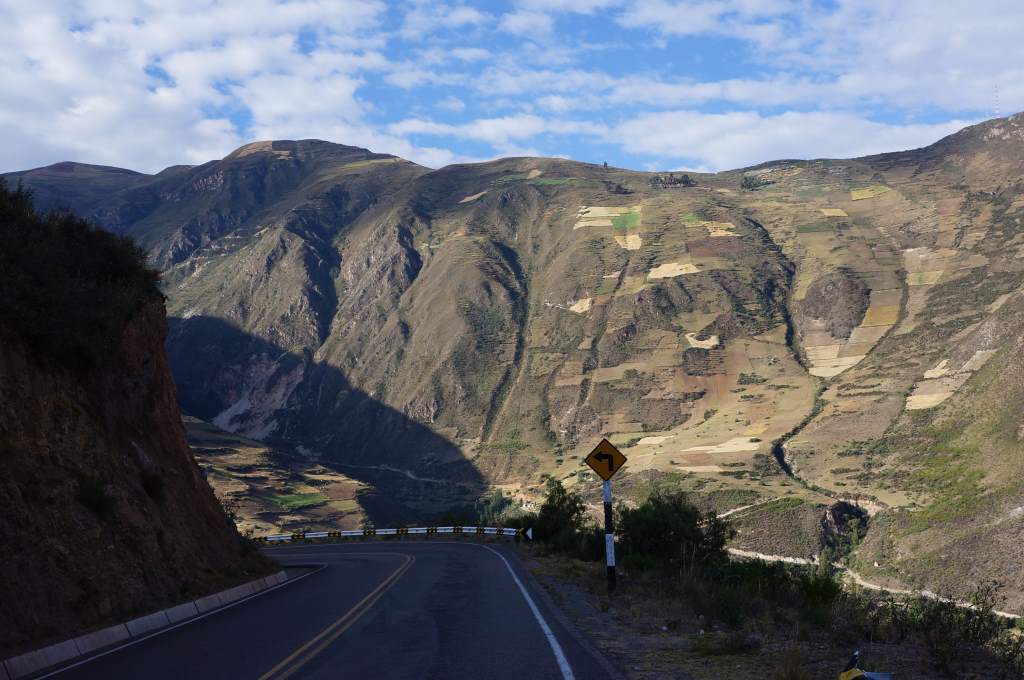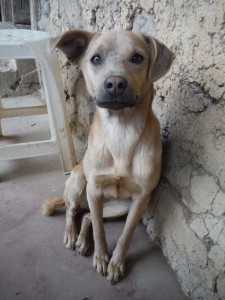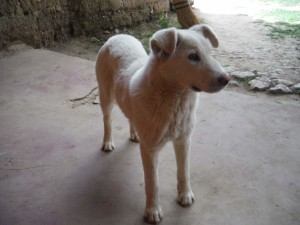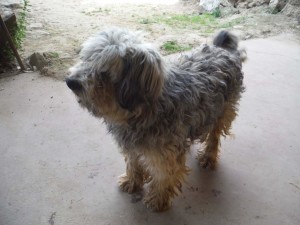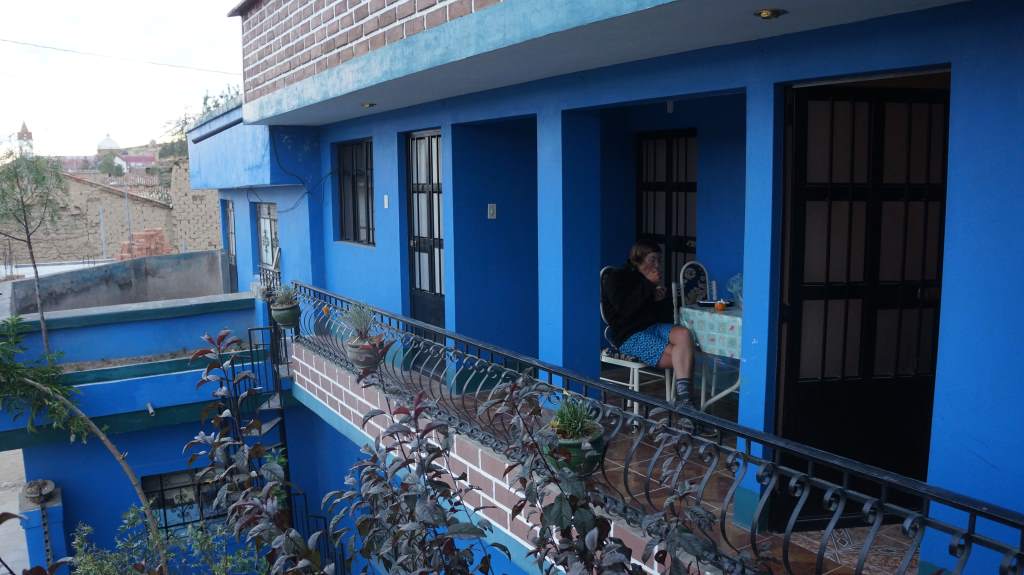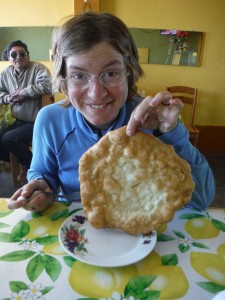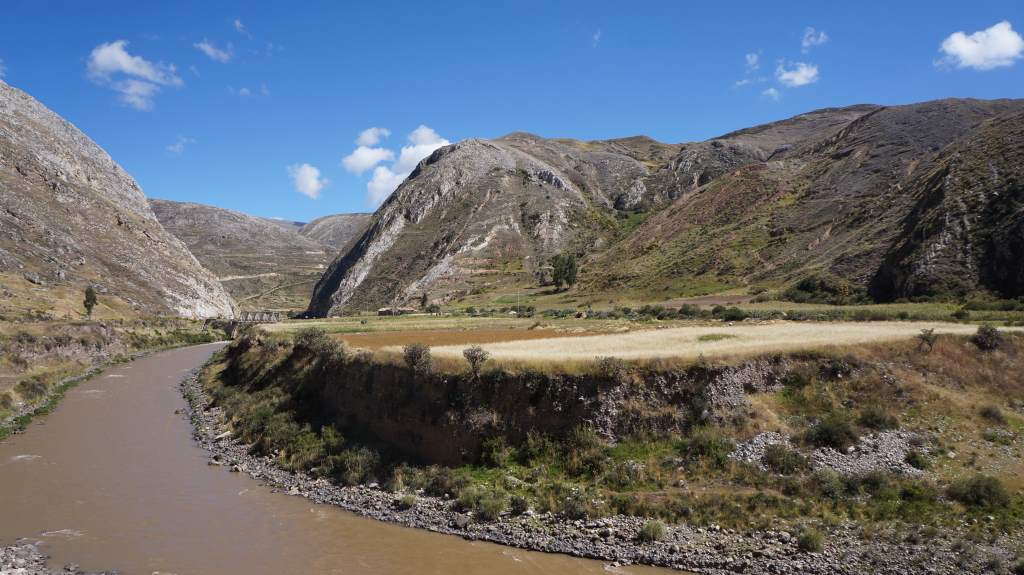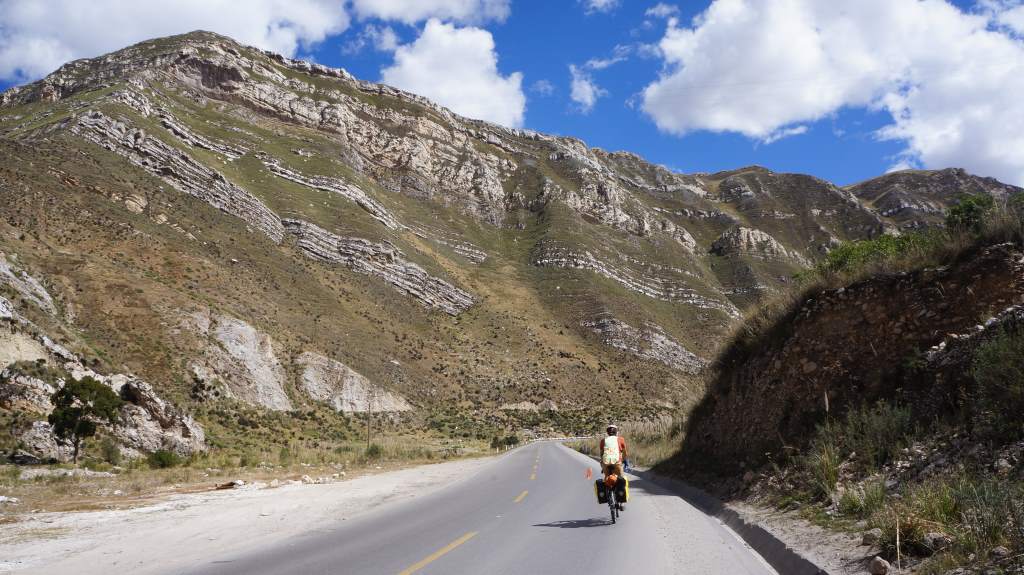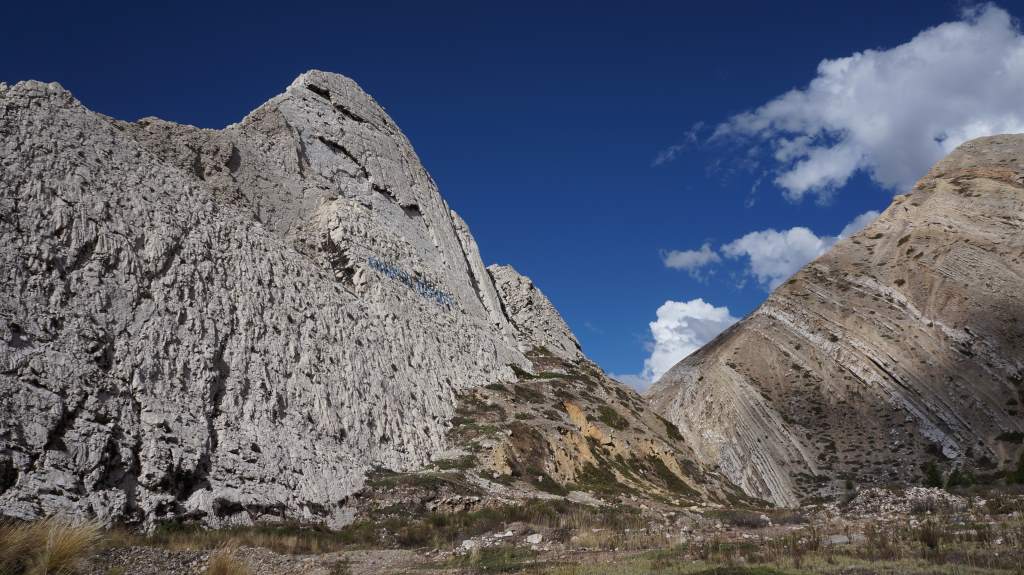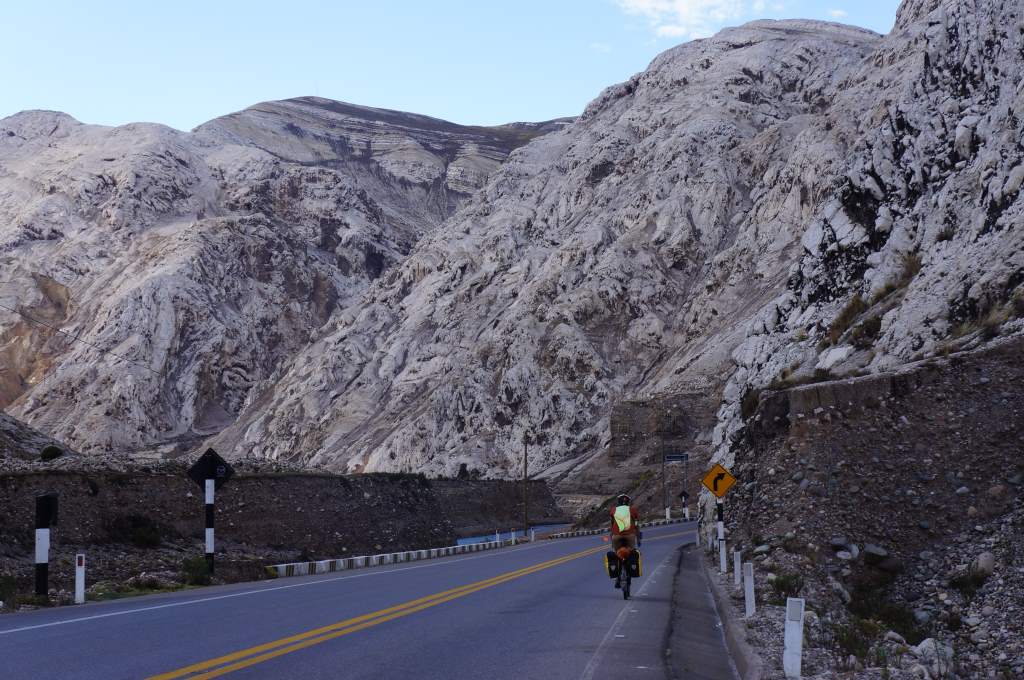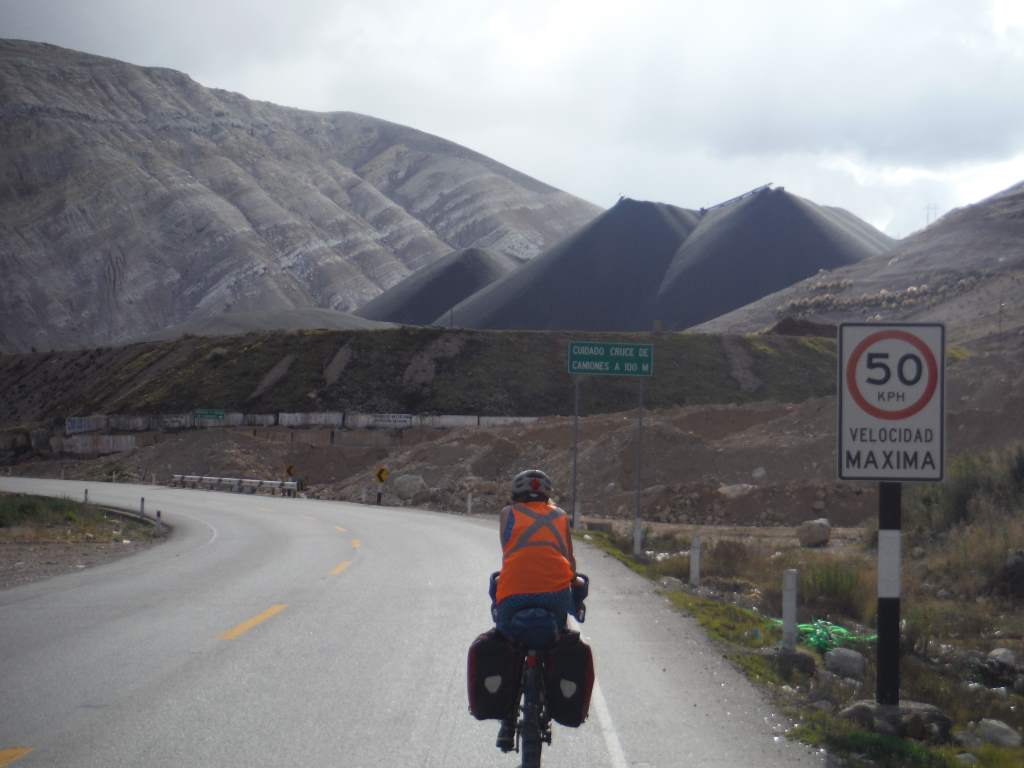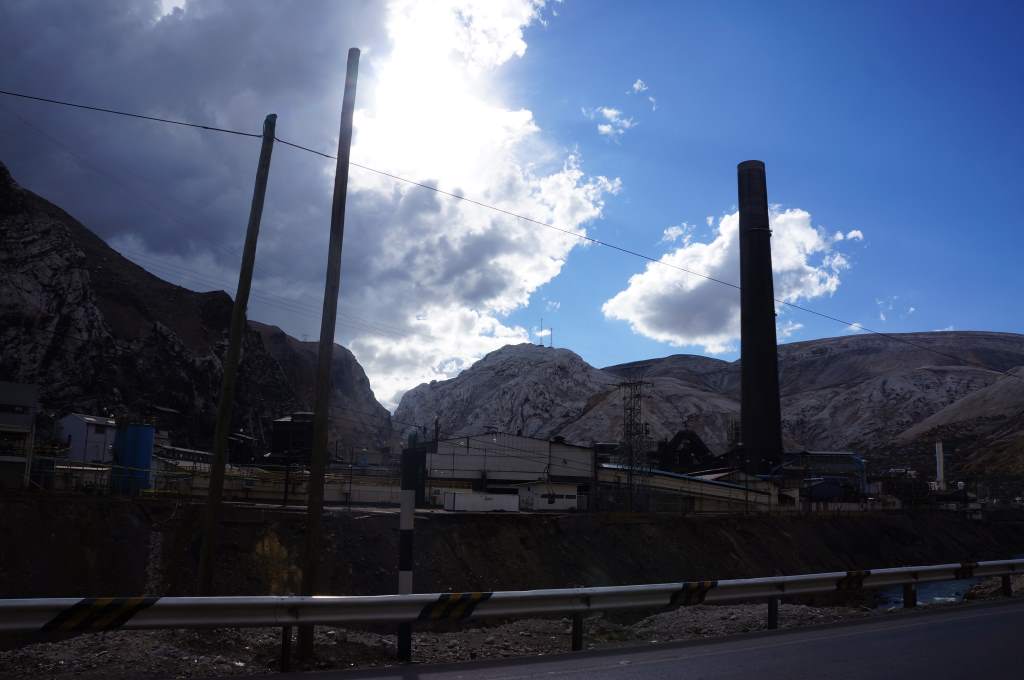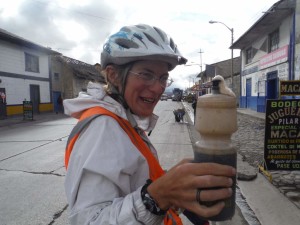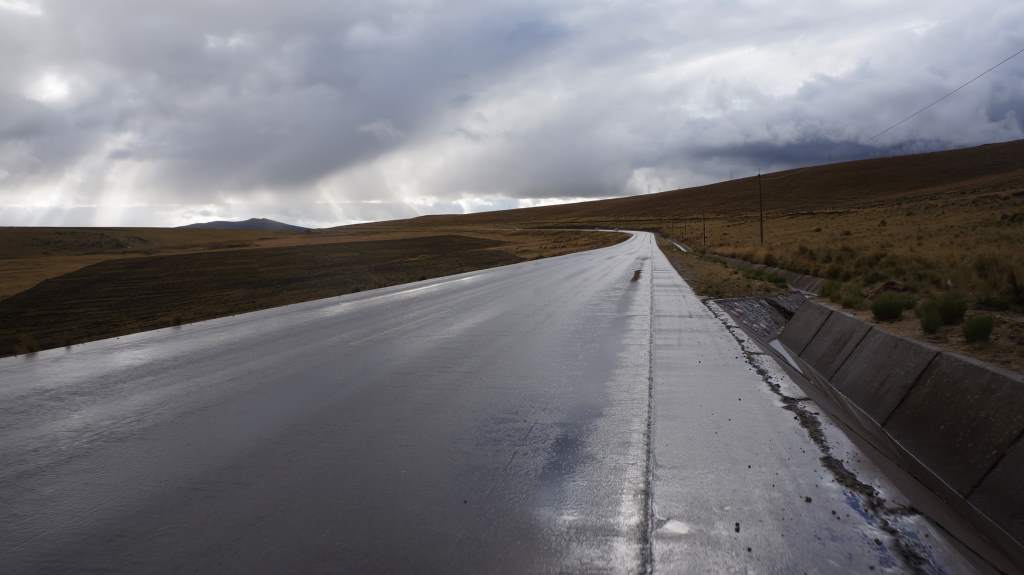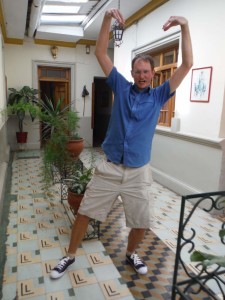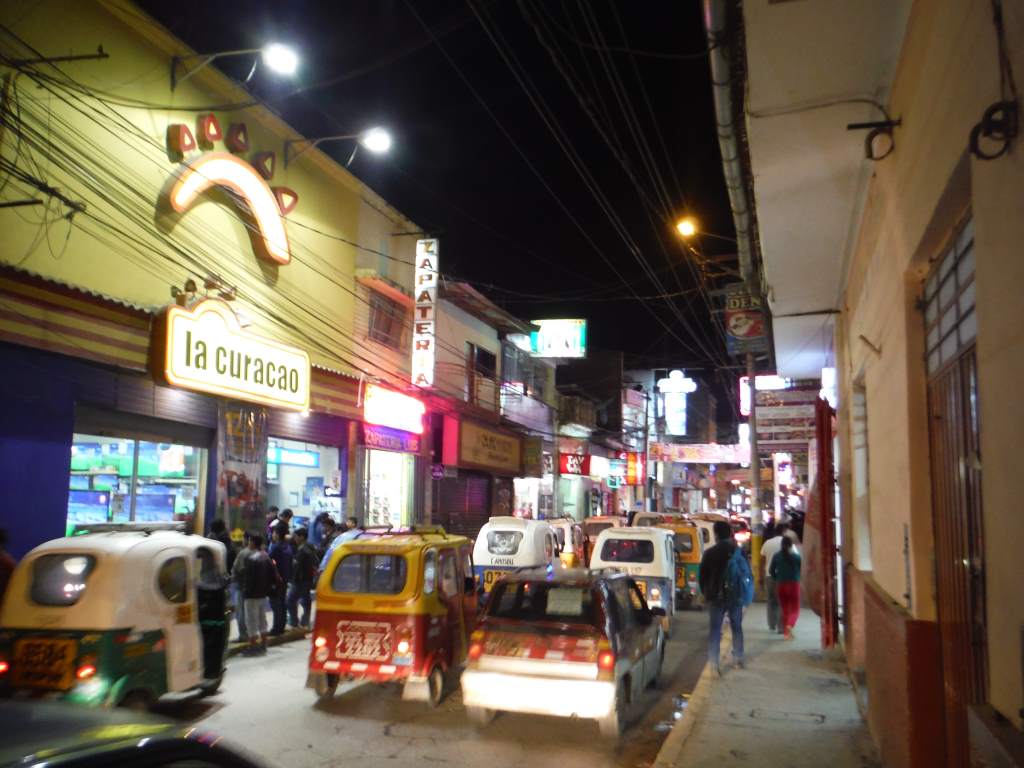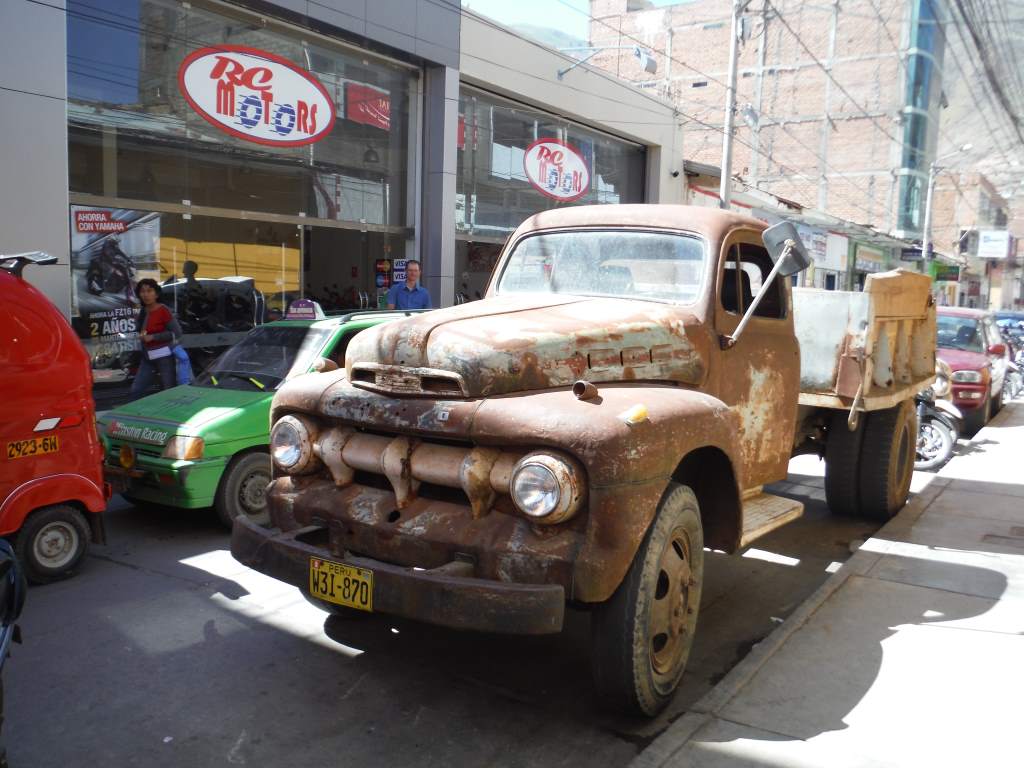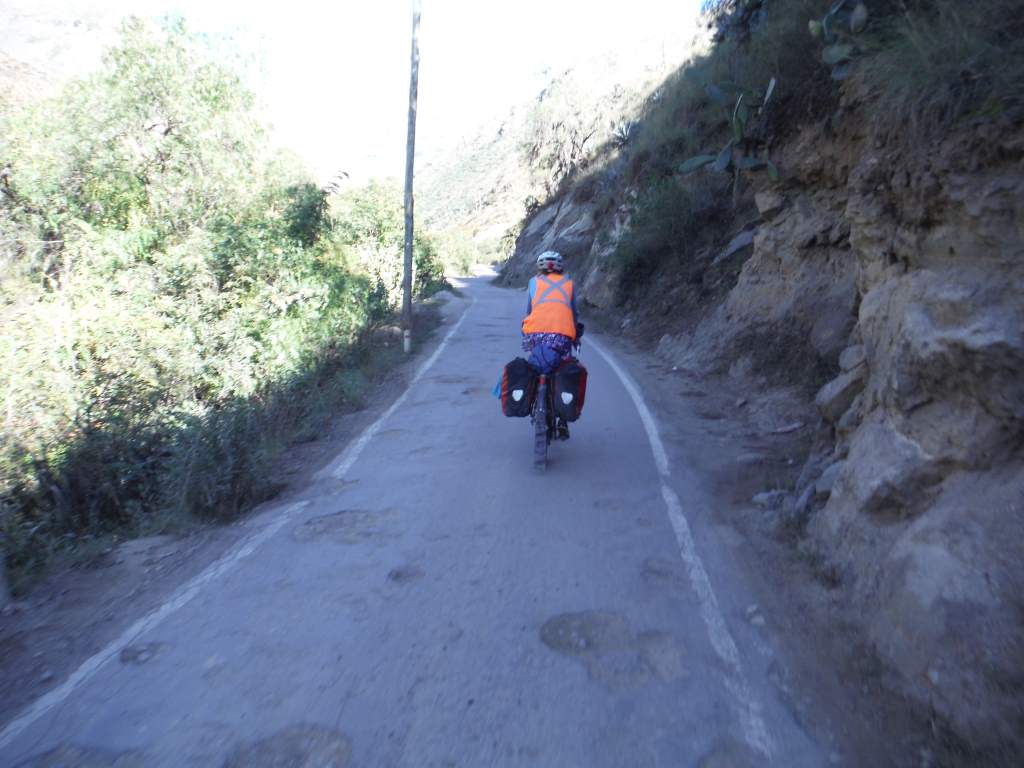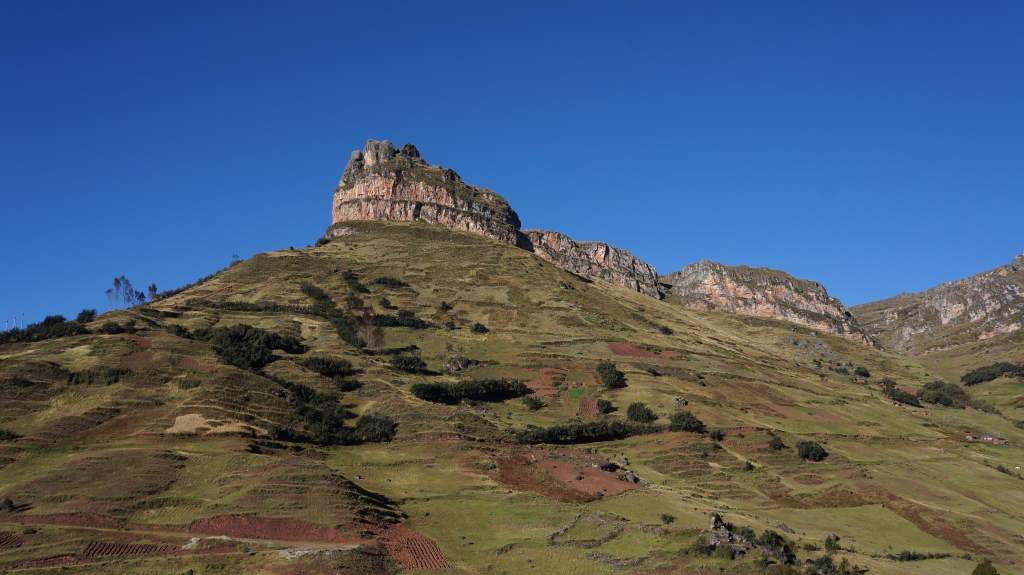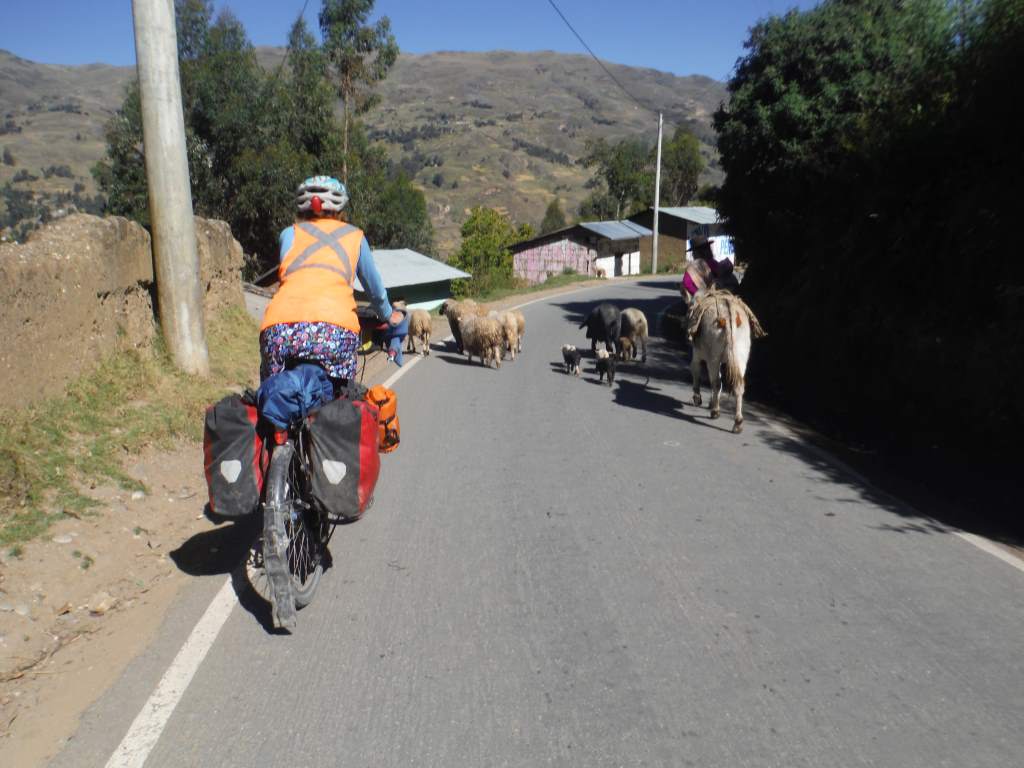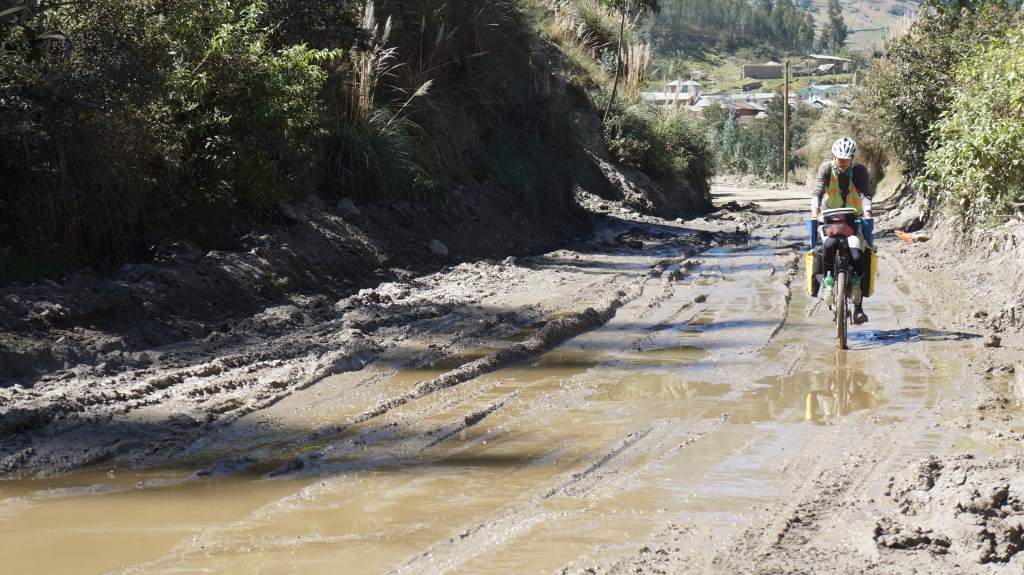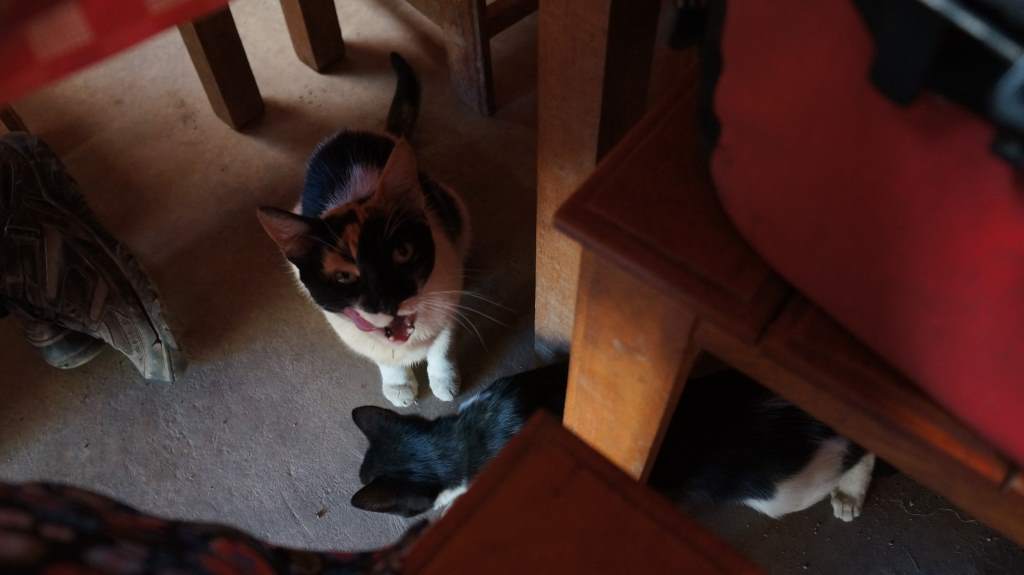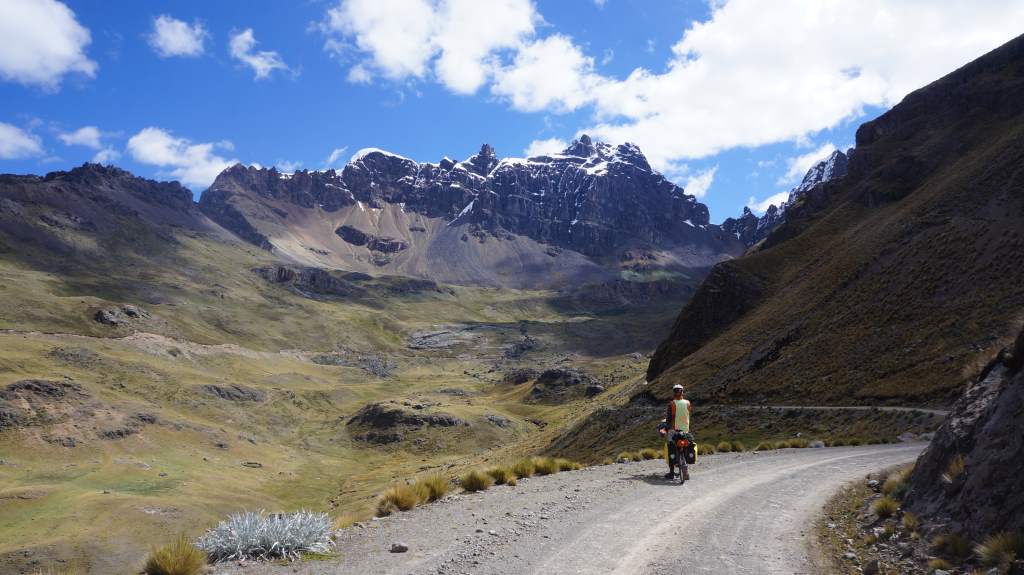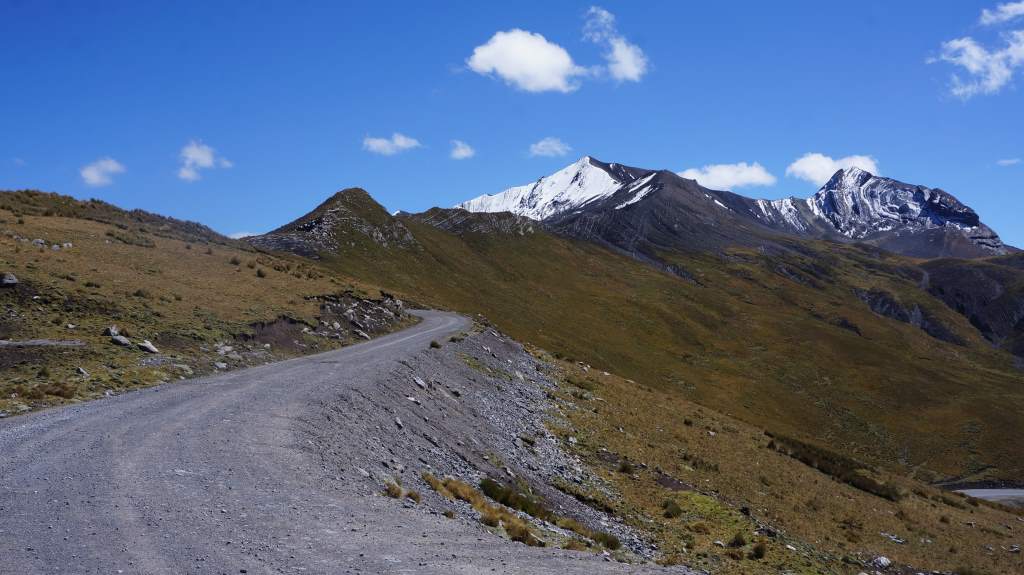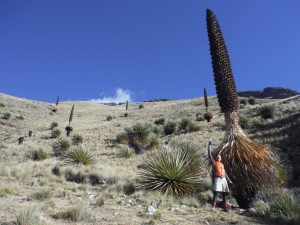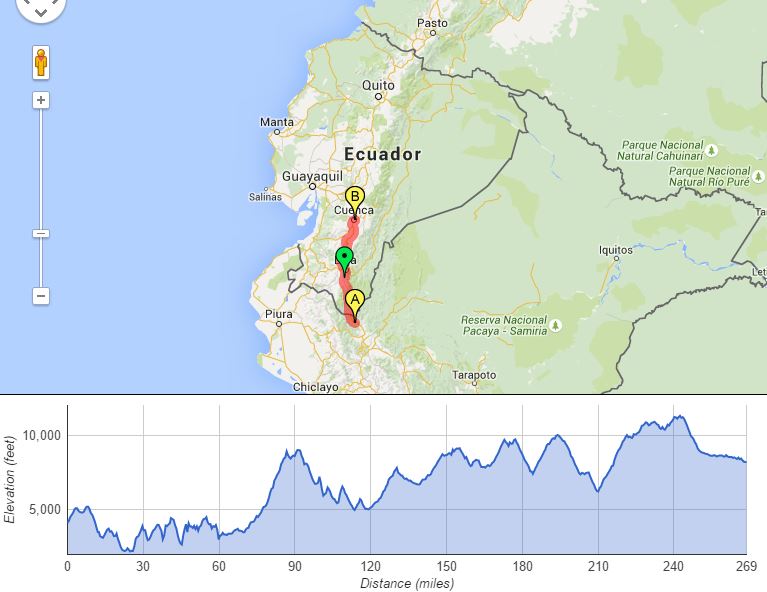 One week ago we entered our eighth country: Ecuador. It then proceeded to pour rain for the next week. Charmed as we were by the lush jungle, new architecture, and very nicely painted churches, it has been a tough week. We are now resting in the colonial city of Cuenca in the Ecuadorian Andes, where it has finally (!) stopped raining for a bit.
One week ago we entered our eighth country: Ecuador. It then proceeded to pour rain for the next week. Charmed as we were by the lush jungle, new architecture, and very nicely painted churches, it has been a tough week. We are now resting in the colonial city of Cuenca in the Ecuadorian Andes, where it has finally (!) stopped raining for a bit.
Leaving Peru was a bit of an adventure. The road is paved all the way to the border, where there is a very quiet immigration building and a lovely ‘peace bridge’. As we rode towards the border a man on a motorbike yelled at us ‘Gringos! Wait for me! Wait for me there!’. We were a bit confused, but carried on to the border. When we arrived the immigration building was empty. Humph. We figured that the yelling motorbike guy must be the border agent, who had left his post to head to town. A half hour later, he returned and proved us right. The rest of the border formalities (on both sides) were very easy. Apparently almost no tourists pass through here, so everyone was very friendly and mellow. The only downside was the lack of ‘Welcome to Ecuador’ signs!
As soon as we crossed the border the road became dirt and the grades became severe. We think the grade neared 20% on some stretches right after the border, but for the most part it hovered around 12%. This means we were in our lowest gears, and still barely able to keep moving. The road climbed and dipped and climbed again quickly on the steep hills. In only 14 miles we climbed AND descended over 4,000′ on dirt roads, and of course it was raining by the end of it.
We noticed right away when we entered Ecuador that the living standard was higher. The houses were constructed differently, and most had very nice covered balconies and porches. The churches were all nicely painted in bright colors. We stopped seeing three-wheeled motorcycle taxis and started to see yellow pick-up truck taxis and the classic bus transportation: the Rancheras. We spent that first night in a nice hotel in the lively city of Zumba. Everyone was very friendly to us and called out ‘Good morning!’ to us all evening. Oh, and did I mention that Ecuador uses the US dollar? It is truly bizarre to us to pay for things using five dollar bills and one dollar coins. They LOVE one dollar coins here; there are designs I have never even seen back in the States!
The next day we woke up to pouring rain. We debated just staying in Zumba for another day, but in the end we decided to make a go of it. This ‘do we ride or not’ discussion would be repeated each day for the next 5 days! On this day, though, we sometimes REALLY regretted not resting! You see, the heavy rain had caused even more mudslides and landslides than usual on the lightly trafficked dirt road. We had to drag ourselves and our bicycles through thick mud that sometimes went higher than our ankles. By the end of the day we were filthy and exhausted. Our bicycles were ok, since we had spent time in mud puddles to wash them off, but our brake pads were wearing at an alarming rate. We stayed in a small, simple hostel in a tiny town. At first it was obviously a quiet place, but then the whole hostel was suddenly packed. We learned that the road was closed due to a massive mudslide 10 km up the next climb. Oh goodness…
There were a few clear moments though!
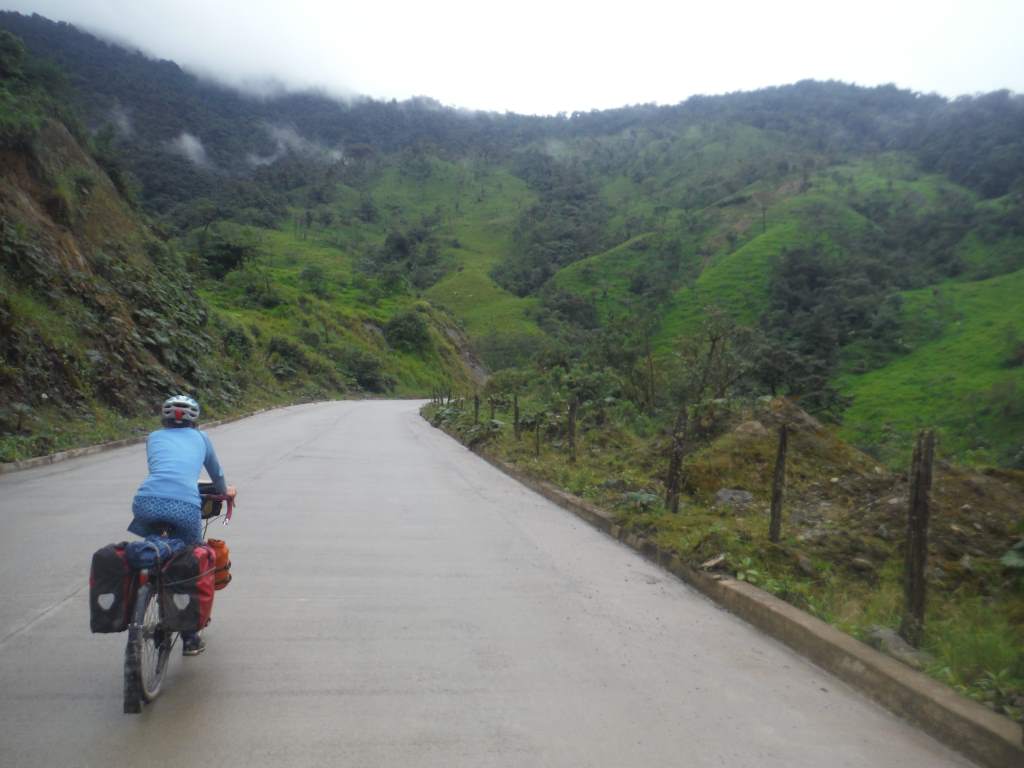
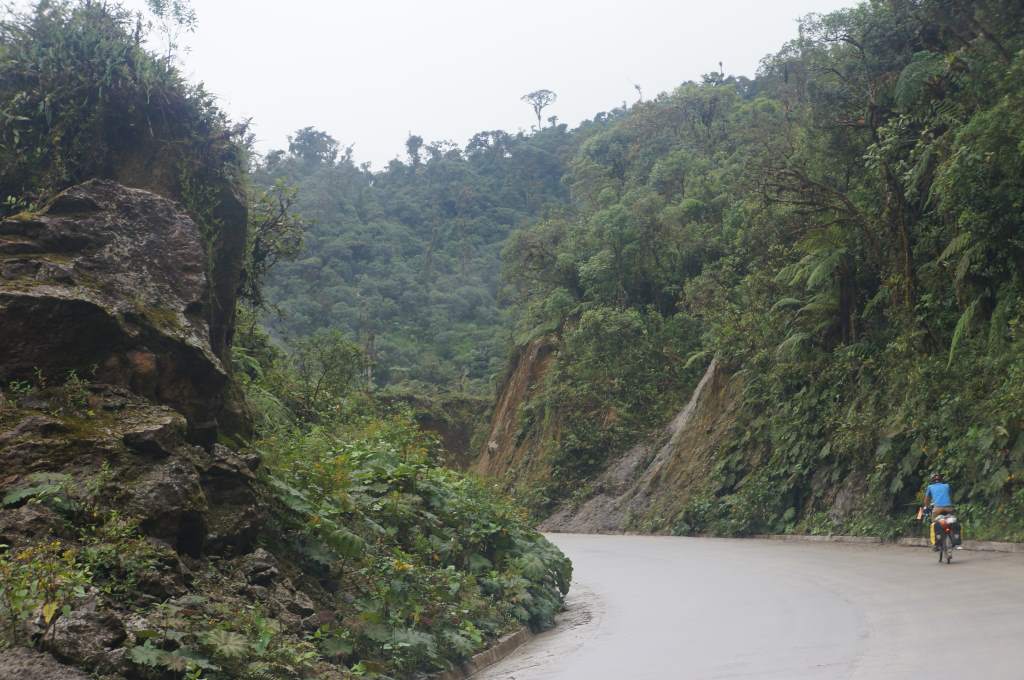
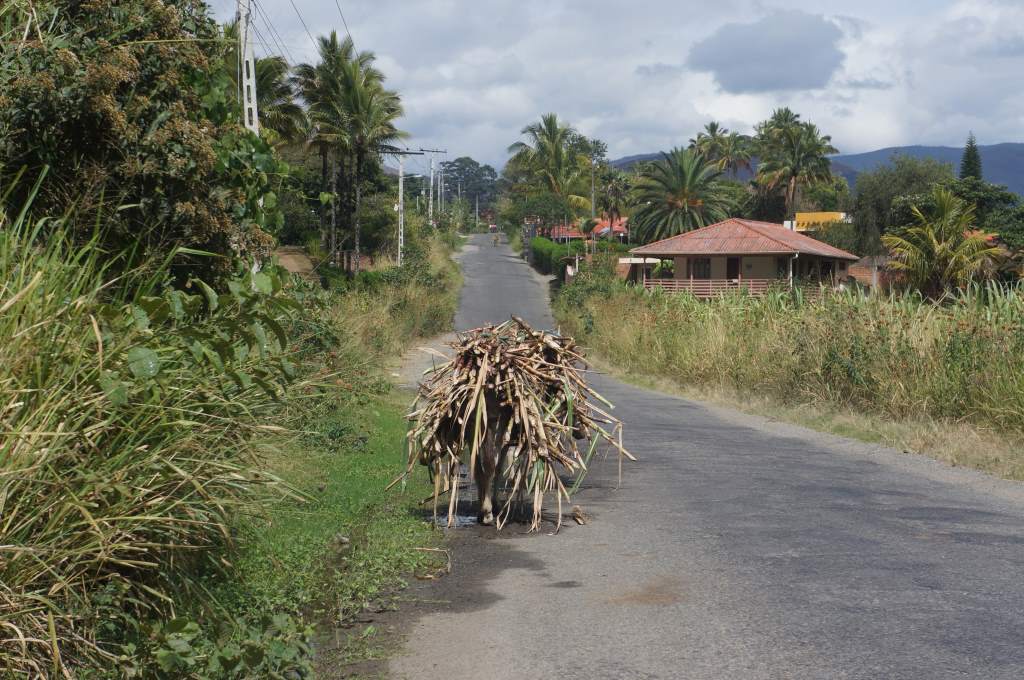
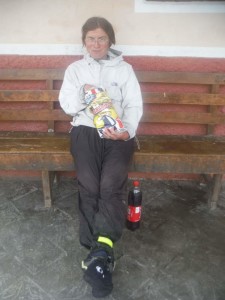 The road became pavement (mostly), and we made our way past the mudslide the next day. The wind and rain just kept coming, however. At the top of every pass visibility was minimal, the temperature hovered around 40, and the rain blew sideways. Every day we arrived in the next town soaked and exhausted. We took a rest day in the town of Vilcabamba, AKA Gringolandia. This little valley made headlines for having the perfect climate for longevity, so a whole herd of ex-pats and hippies moved there. We found the place a bit bizarre, but were thrilled at the availability of peanut butter.
The road became pavement (mostly), and we made our way past the mudslide the next day. The wind and rain just kept coming, however. At the top of every pass visibility was minimal, the temperature hovered around 40, and the rain blew sideways. Every day we arrived in the next town soaked and exhausted. We took a rest day in the town of Vilcabamba, AKA Gringolandia. This little valley made headlines for having the perfect climate for longevity, so a whole herd of ex-pats and hippies moved there. We found the place a bit bizarre, but were thrilled at the availability of peanut butter.
After leaving Vilcabamba we were out of the truly lush jungle area, but the rain continued. We spent an afternoon in the lovely city of Loja. It had a fantastic feel to it, and we loved the mix of modern (cell phone shops, fast food stands, cupcake stores, etc) and historical. There is a good university here, so the students made the place feel alive.
After Loja it was three more days of rainy up and downs. We realize that we have gained an ability to just keep riding in very adverse conditions. Nasty rain, wind, and cold? Just don’t stop, and eat crackers when you get hungry. We continue to eat lunches and dinners out at small roadside restaurants. In Ecuador everything is about twice the price as in Peru (meals are about $3 instead of $1.50), and they have lots of different names for different kinds of bananas. We are becoming banana connoisseurs!
Now we are in the city of Cuenca. It is a big, modern city with a huge historical core. There seems to be a church on every corner. We will spend the day wandering the streets, looking for new brake pads, and eating fried bananas from street vendors. Yippee!
